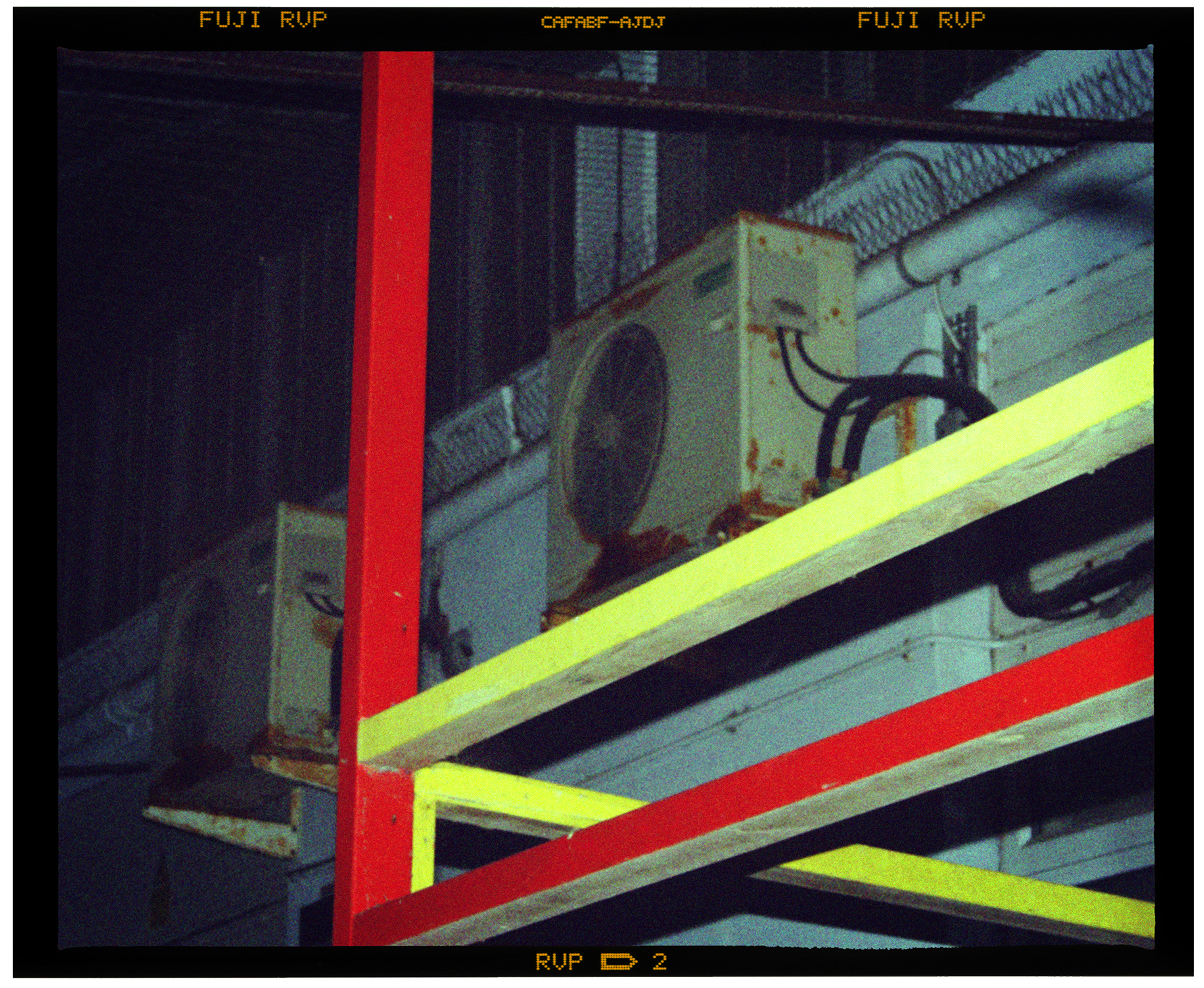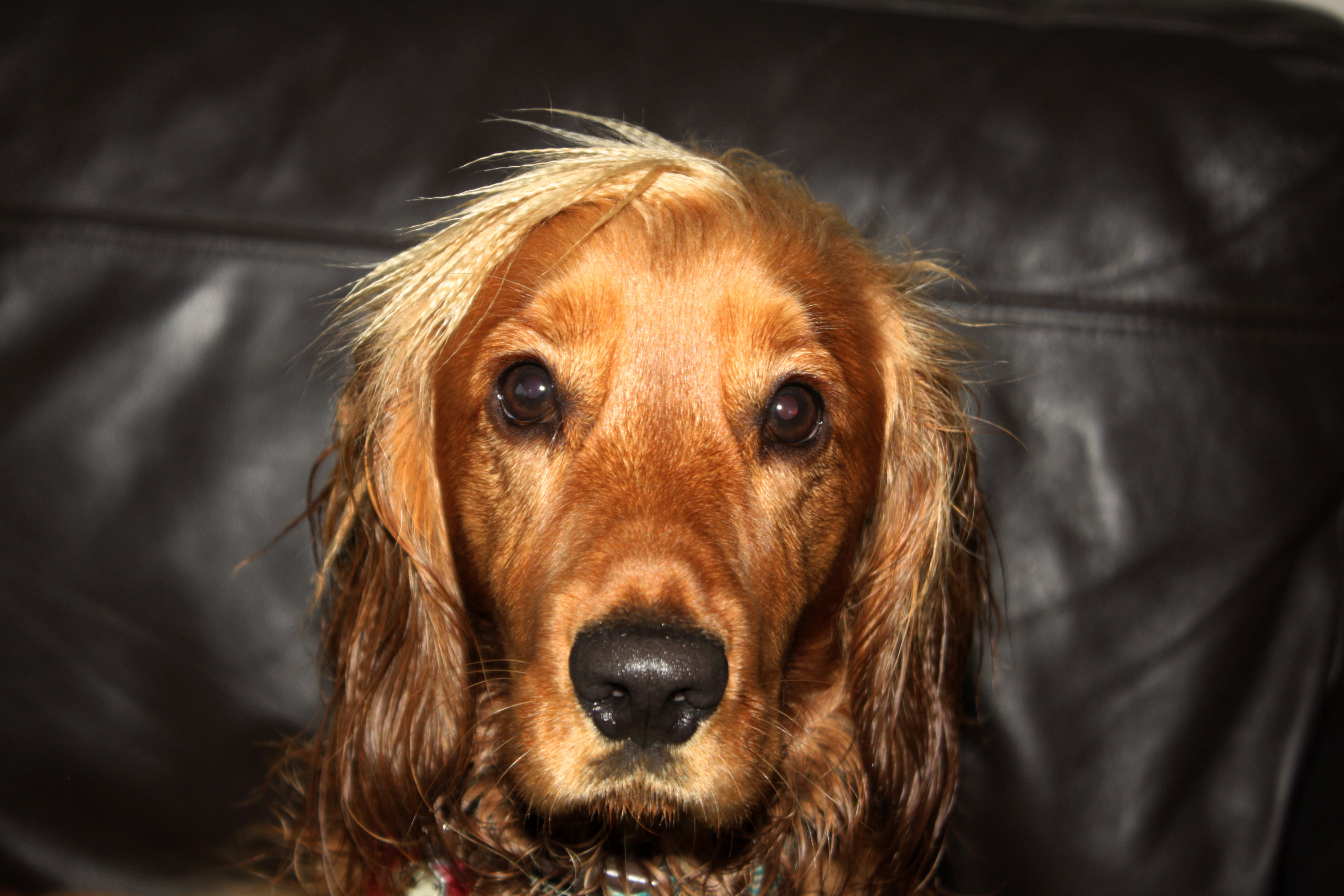
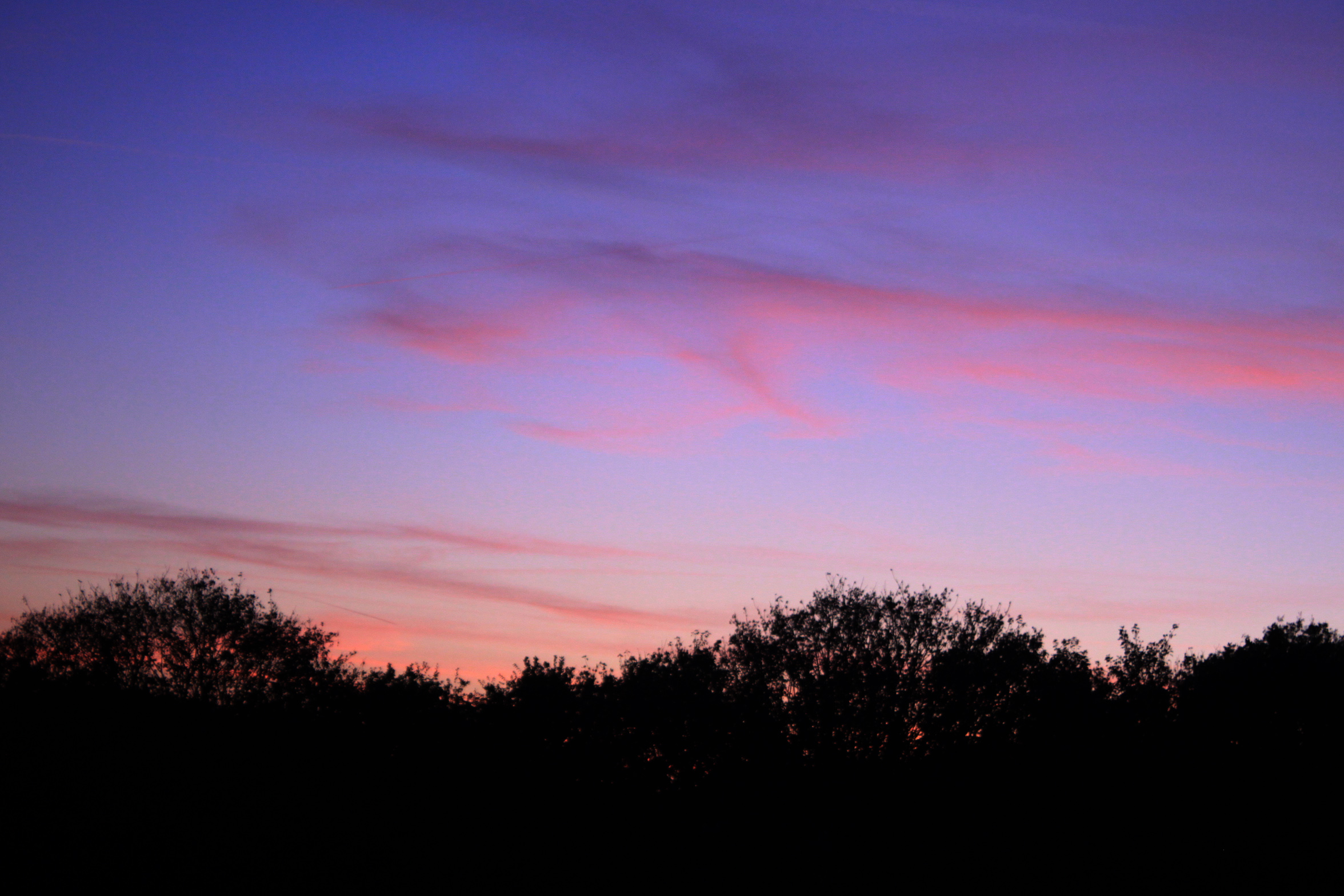
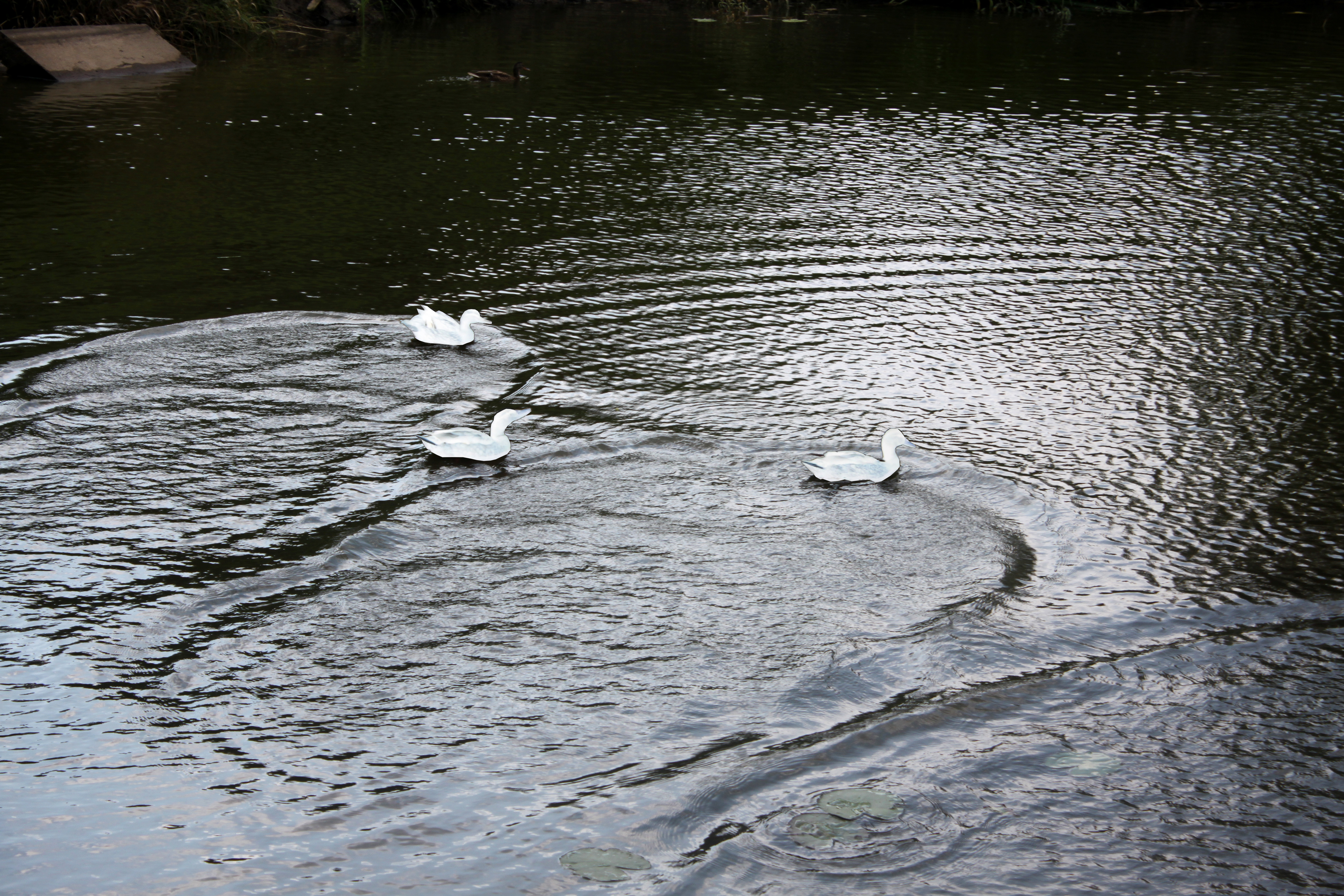



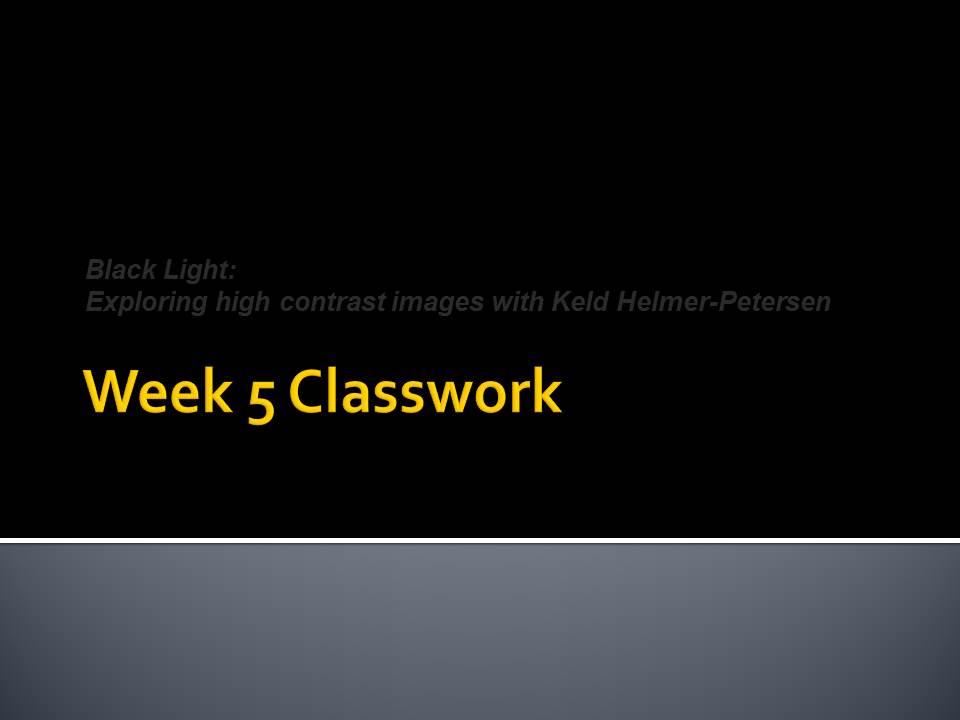
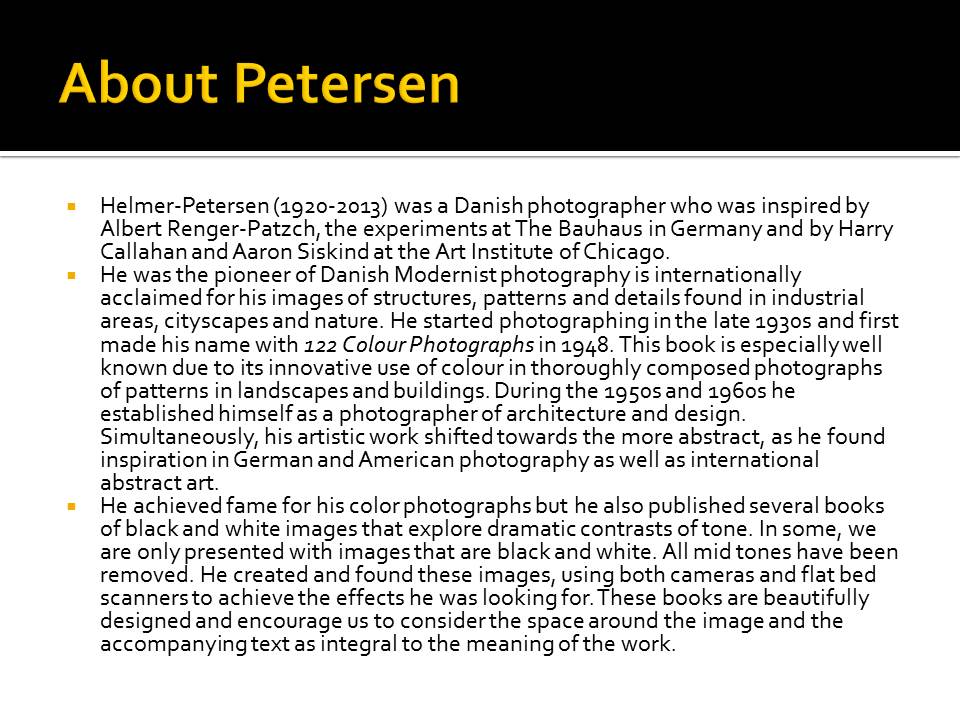

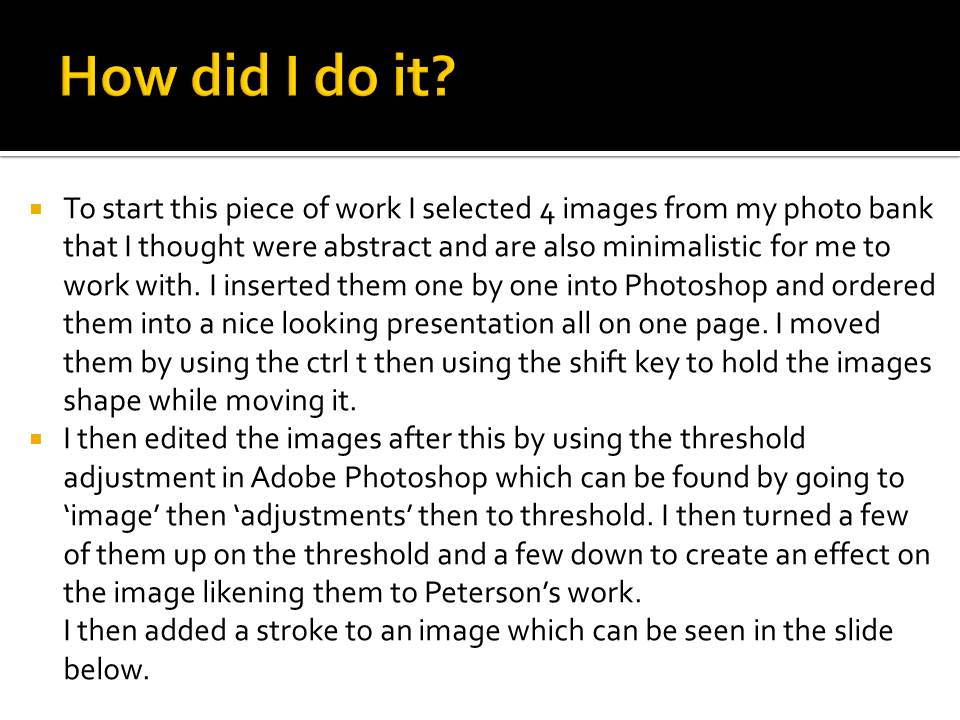
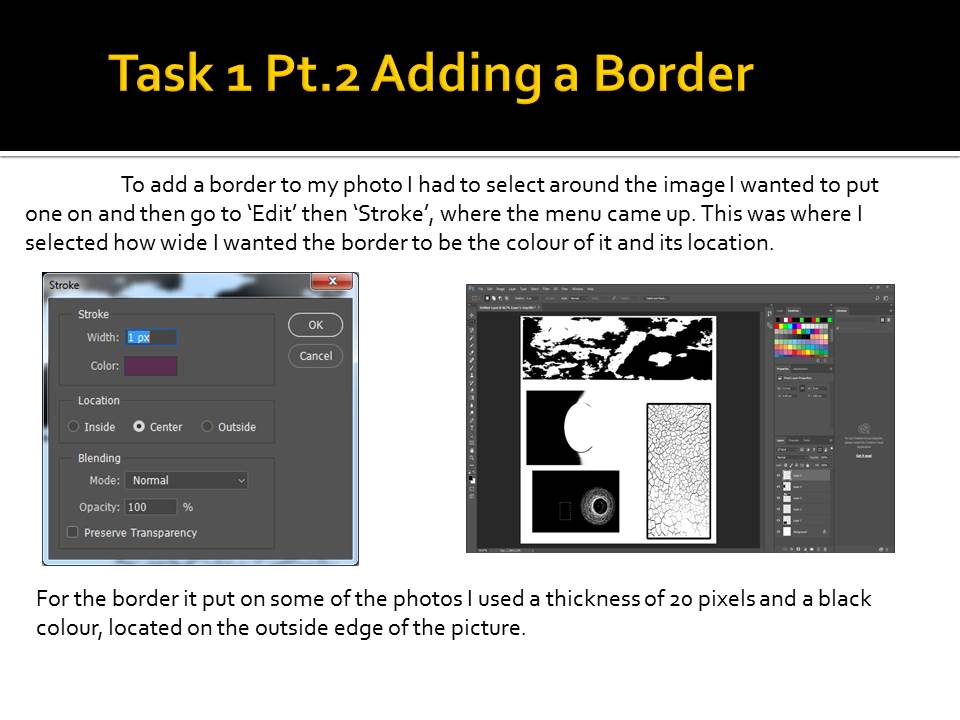
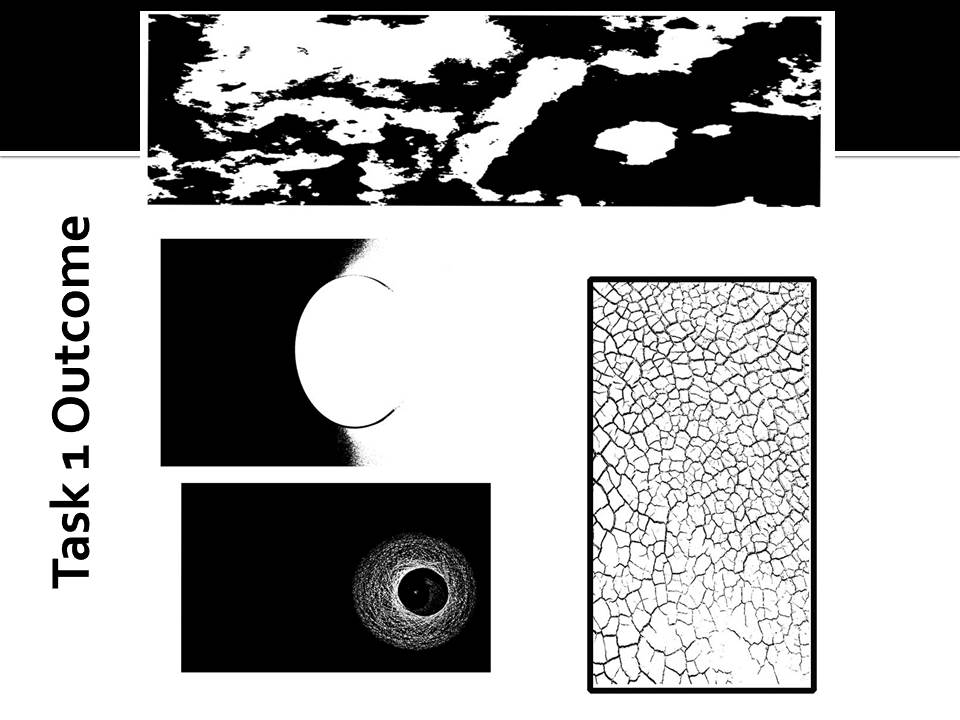
White Balance is when you adjust the colours on your camera to help make an image look more natural. You can change the white balance to make the camera take warmer or cooler images. The impact of this is the image looking more like how our eyes perceive colours and light.
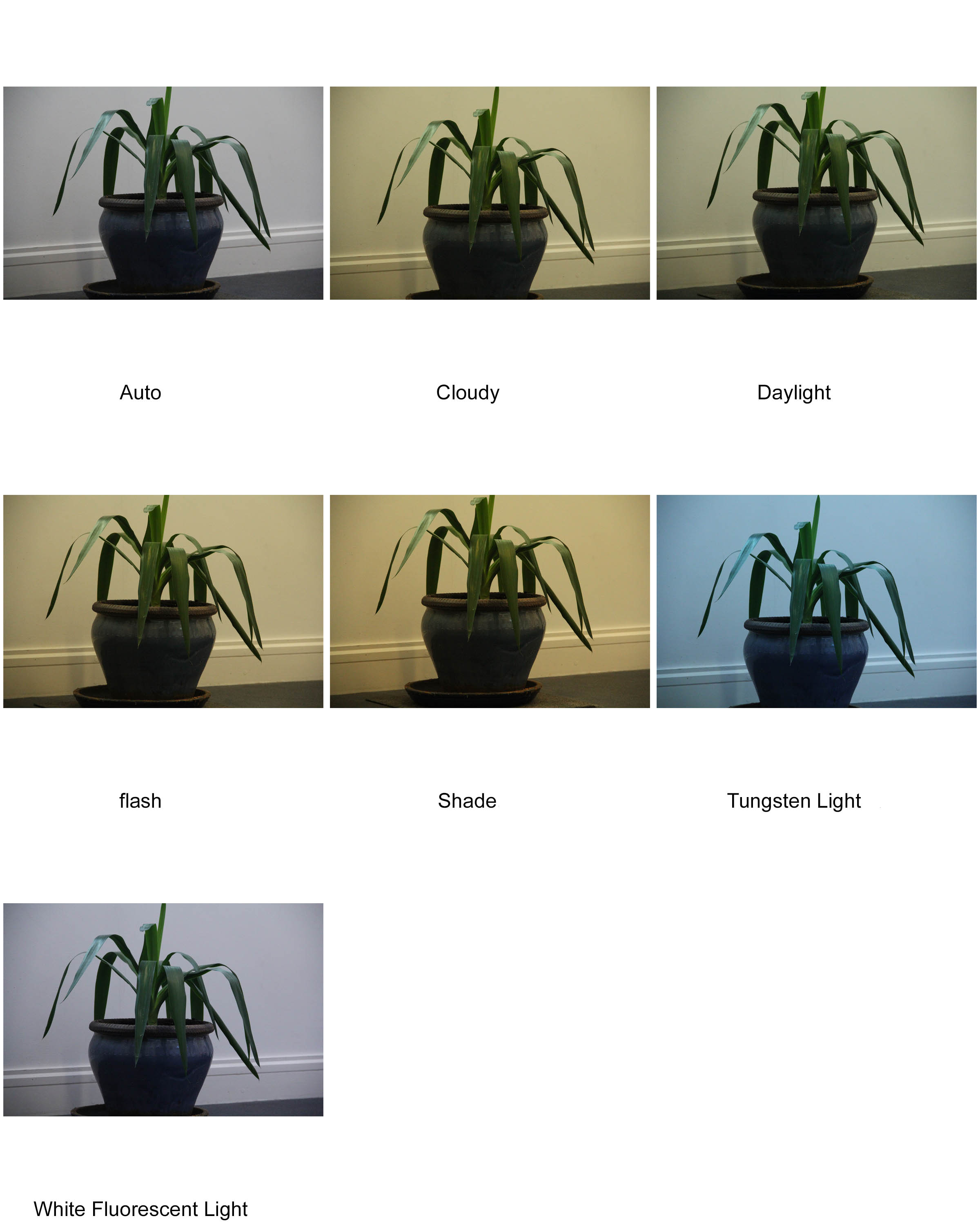
As you can see, first set of images (inside using mostly artificial light) have much more of a distinction between each picture, where as the second set of pictures (using mostly natural light) are much more similar to one another.
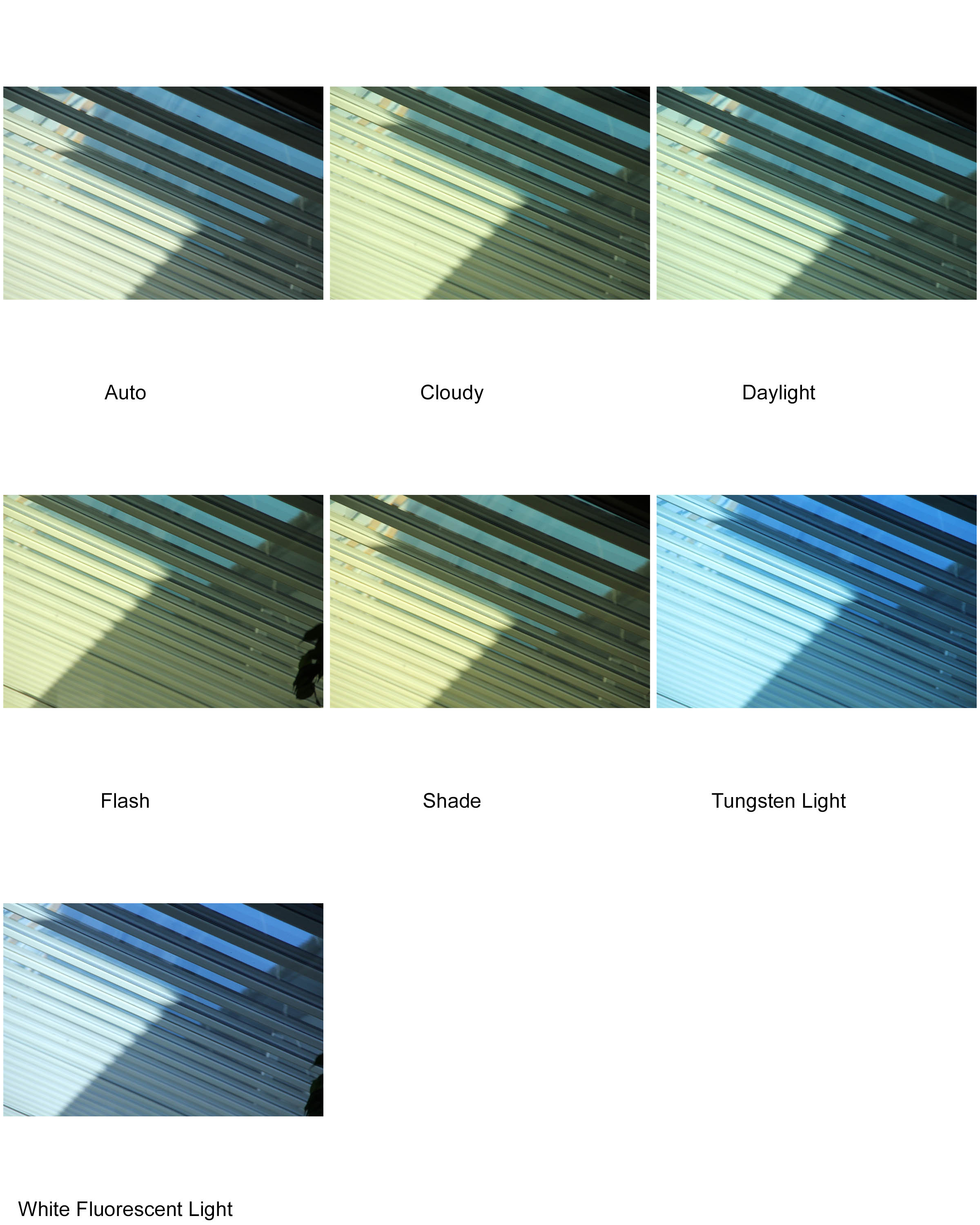
Keld Helmer Petersen was a Danish photographer who gained widespread recognition for his color abstract work in the 1940s and 1950s. He was the pioneer of Danish modernist photography and published his first book 122 color photographs in 1948. He Established a himself as a photographer of architecture and design and while also being known for his color images, he later transitioned into more abstract photography, taking influences from German and American photography as well as international abstract art.
Keld Helmer Petersen’s Abstract photography:

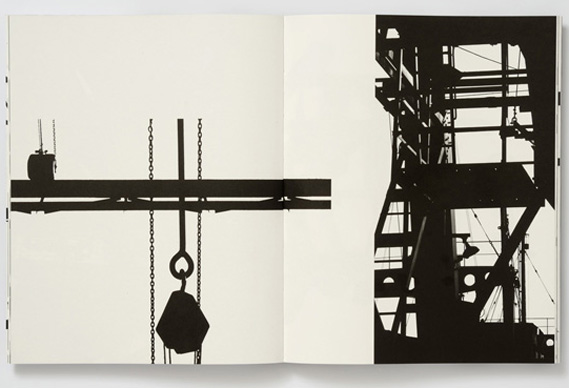
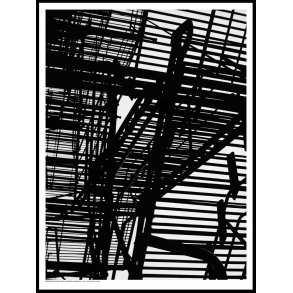
I wanted to recreate Petersen’s work involving cranes and scaffolding using the threshold tool on Photoshop with my most recent photo-shoot. I wanted to emulate the same sense of atmosphere created by Petersen’s photographs. many of the images that I have Chosen had Petersen’s Photos in mind while editing.
My Final Images:
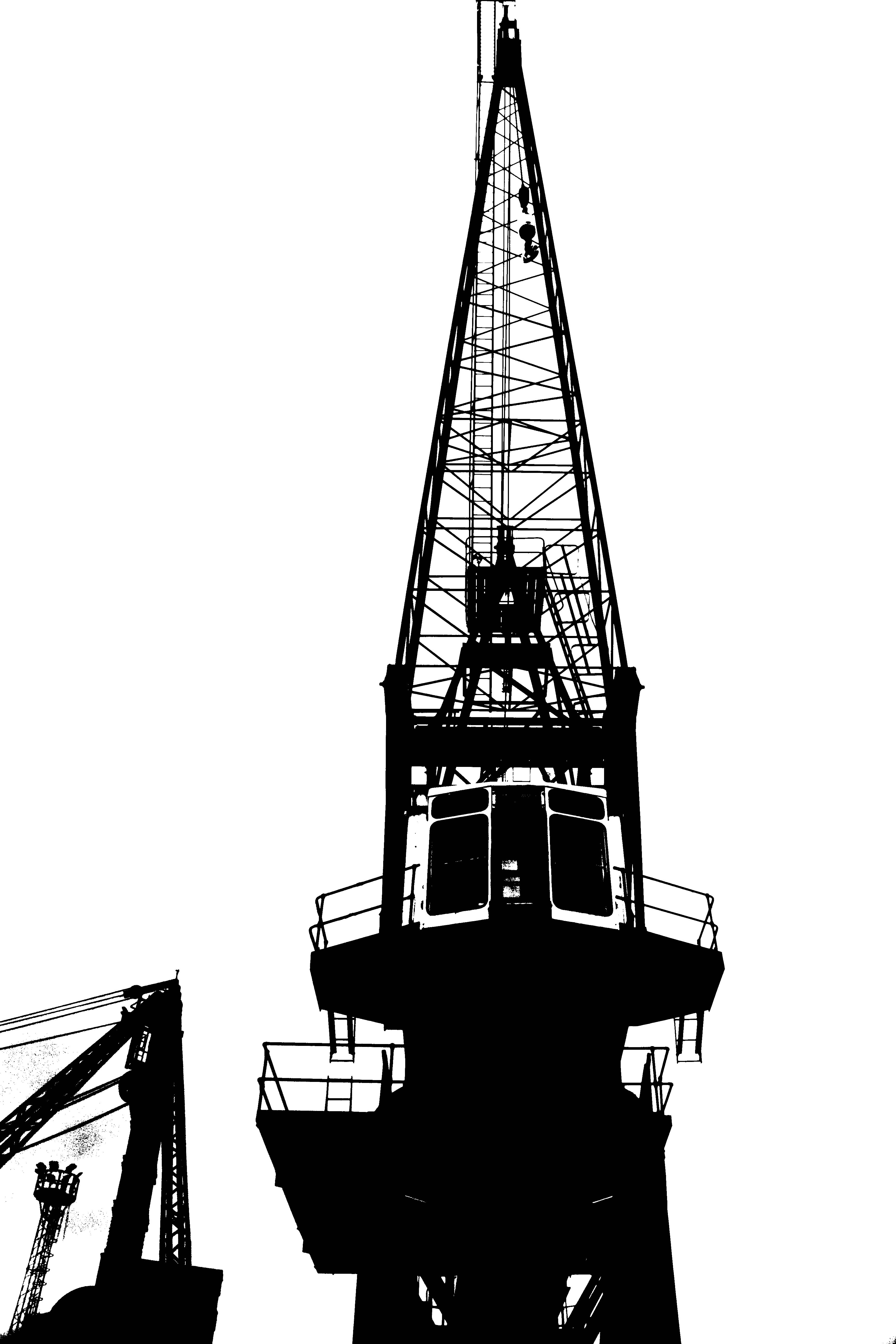

I wanted these Images to replicate that of Petersen’s Black Noise photograph and evoke the same feelings that his work does. I wanted to create the a similar image, while also using my own style combined with that of Petersen’s. This image, while it mainly takes inspiration from Black Noise, it also takes inspiration from many other pieces of his work.

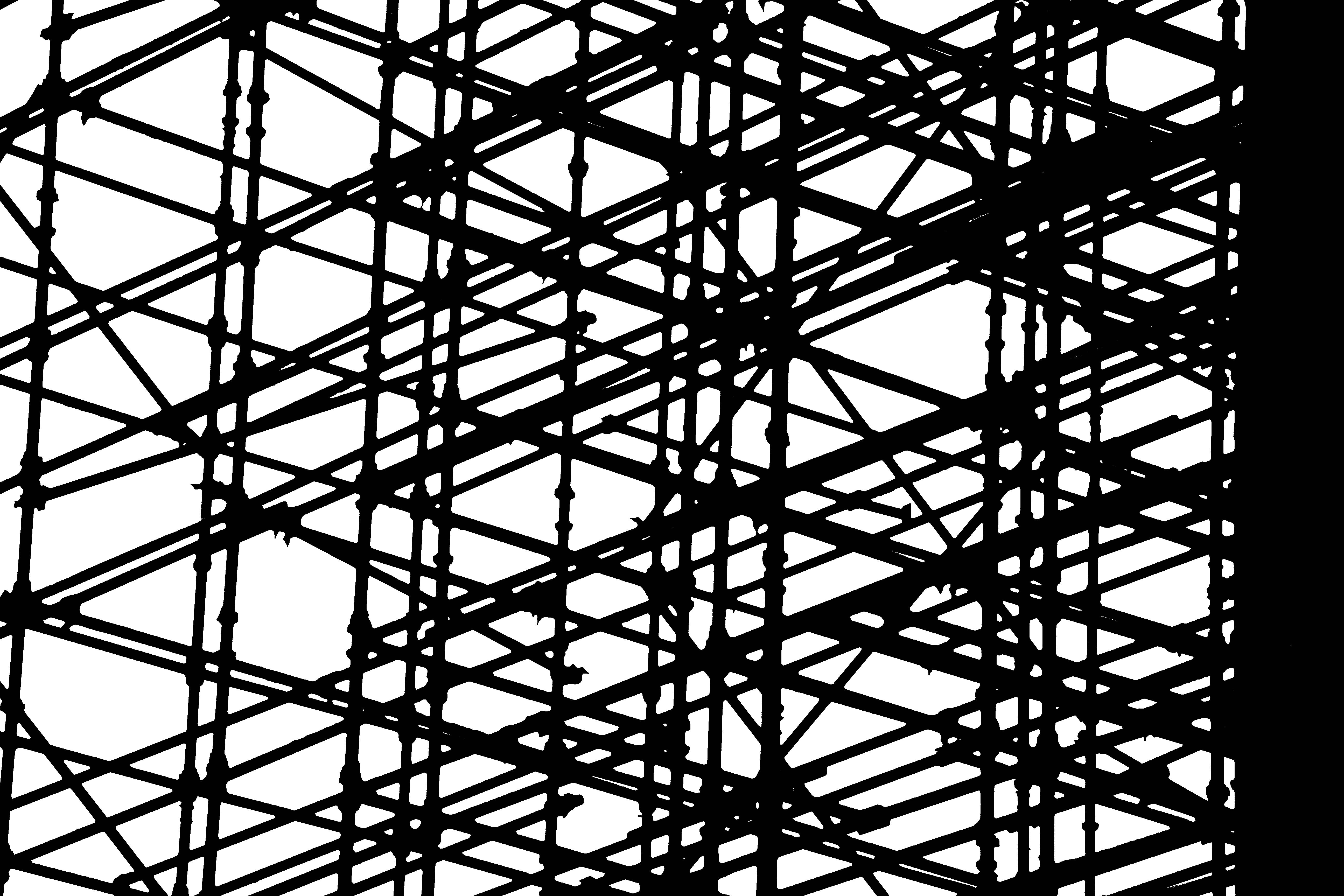
I decided that the Harbor was not the only place to get pictures of industrial buildings and materials. These photographs were taken in town on a building site that was under construction. I wanted to create a high contrast, B&W picture using the threshold tool, and decided that scaffolding with the backdrop of a white sky would work to my advantage.
Keld Helmer Peterson was an architectural photographer who did a lot of working regarding experimentation with high contrast images featuring man made structures.
A similar effect can be created using the threshold tool in Photoshop
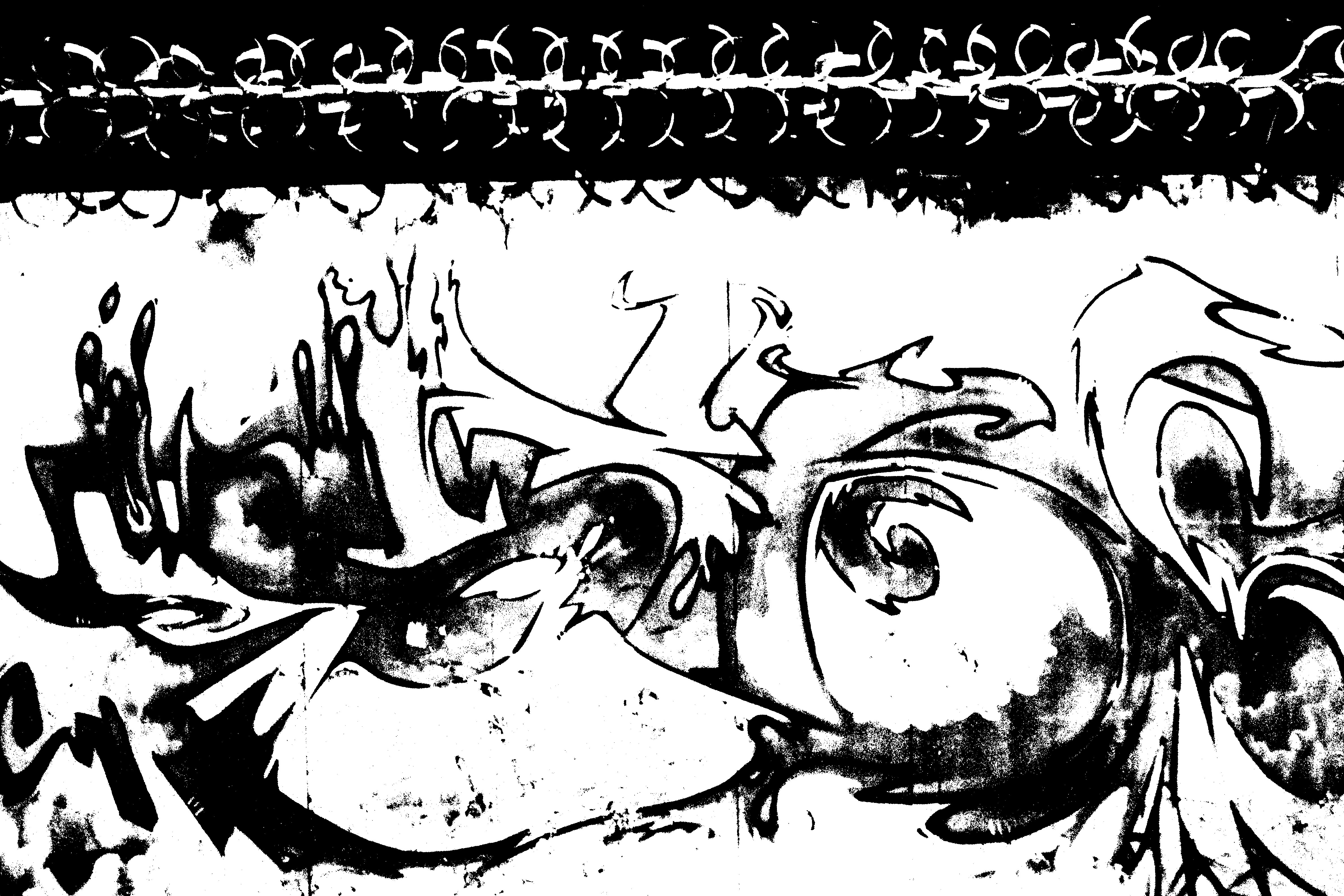
I found that Graffiti translated well into the threshold tool however it creates a rather boring image. I also like how the barbed wire looks when using the threshold tool as it creates an abstract, repeating but chaotic pattern.
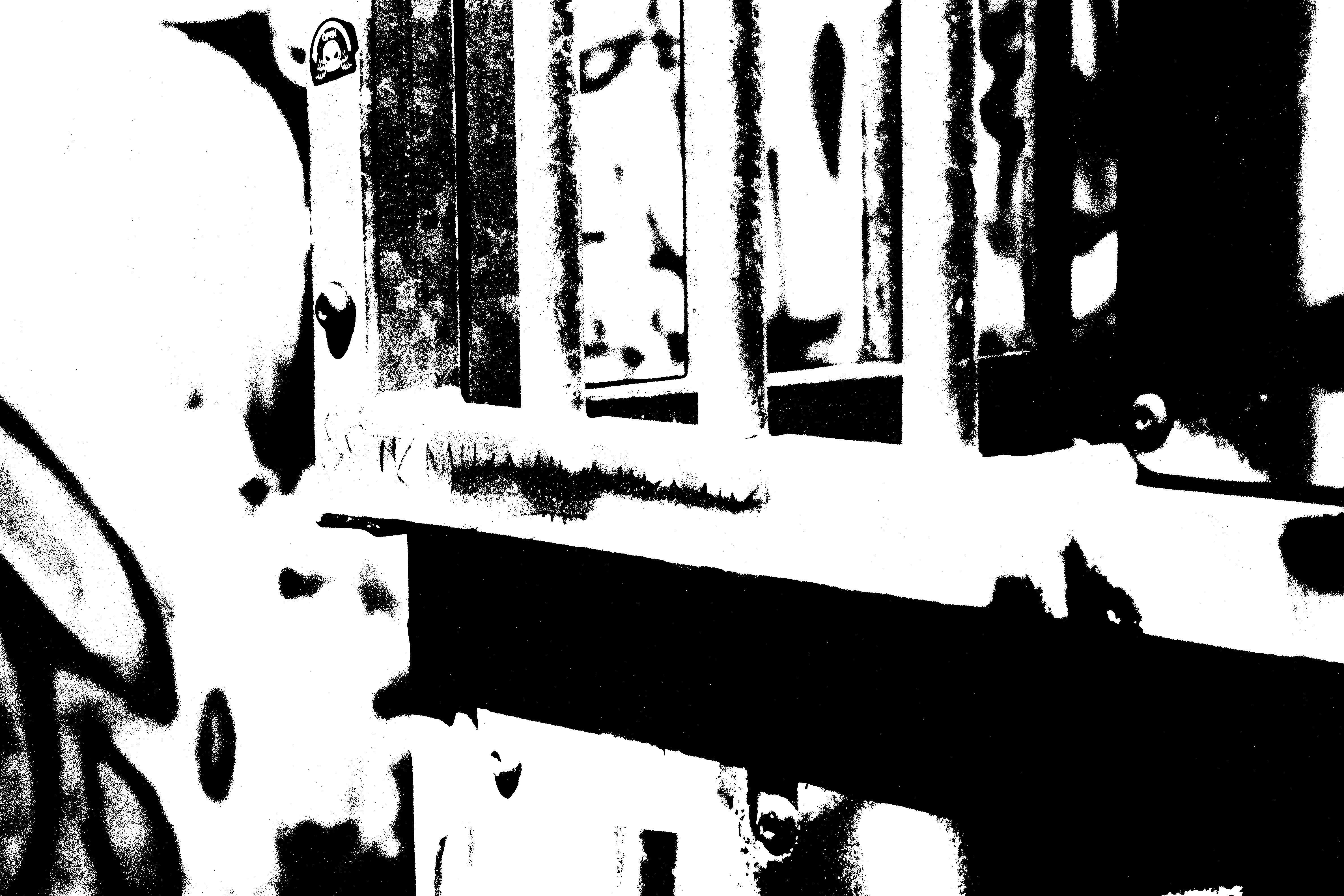
I found that introducing grain into the flatter images helped the image react better to the threshold tool. however i was careful not to add too much grain as it would result in the image simply looking like a grainy black and white image.
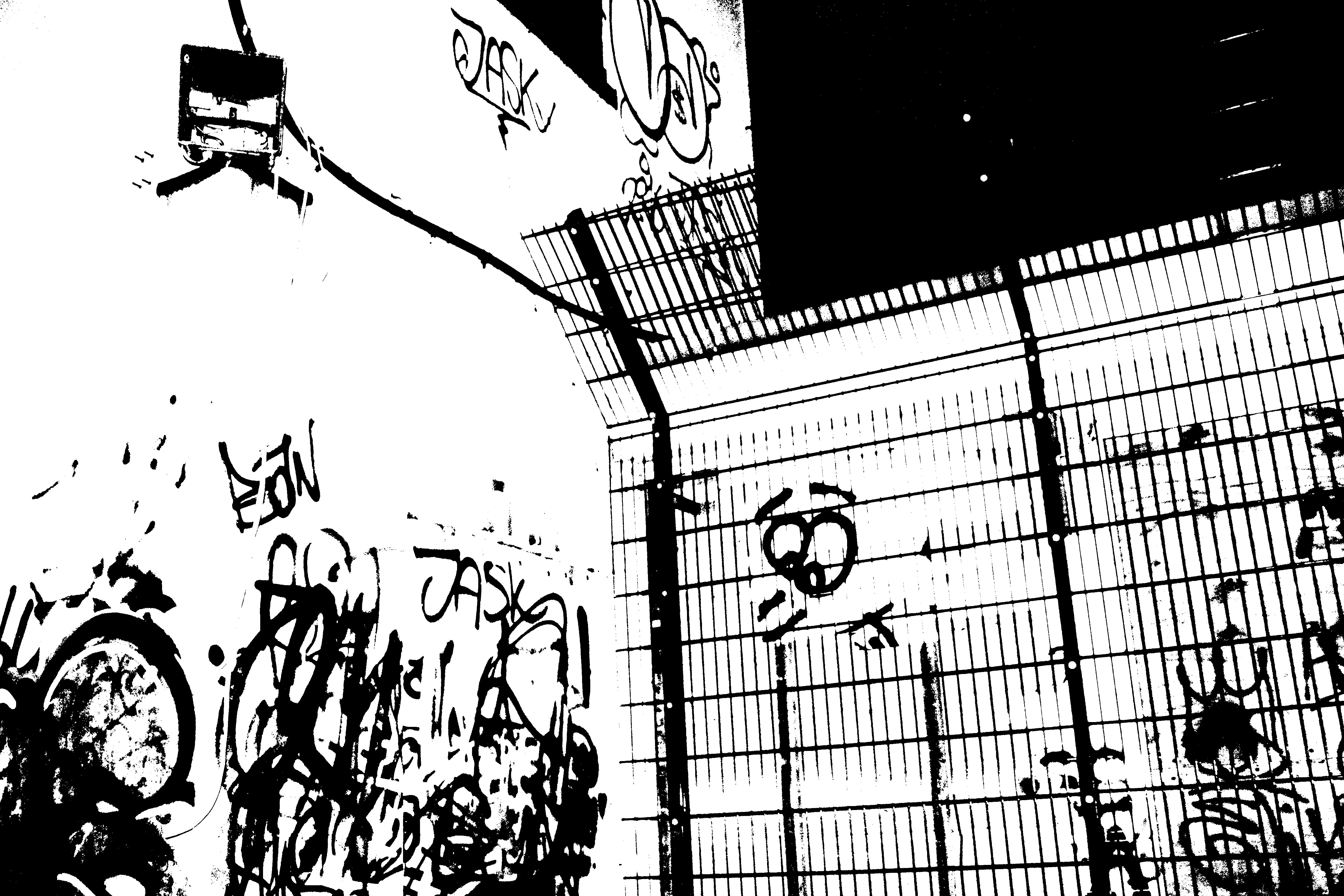
This was one of my favorite images of the photo-shoot. The fence reacted very nicely to the threshold tool giving a strong contrast to the white walls littered with graffiti.

This is my favorite image of the photo-shoot, while the original image was taken in very low lighting, the threshold tool works nicely to highlight the main subject of the photo.
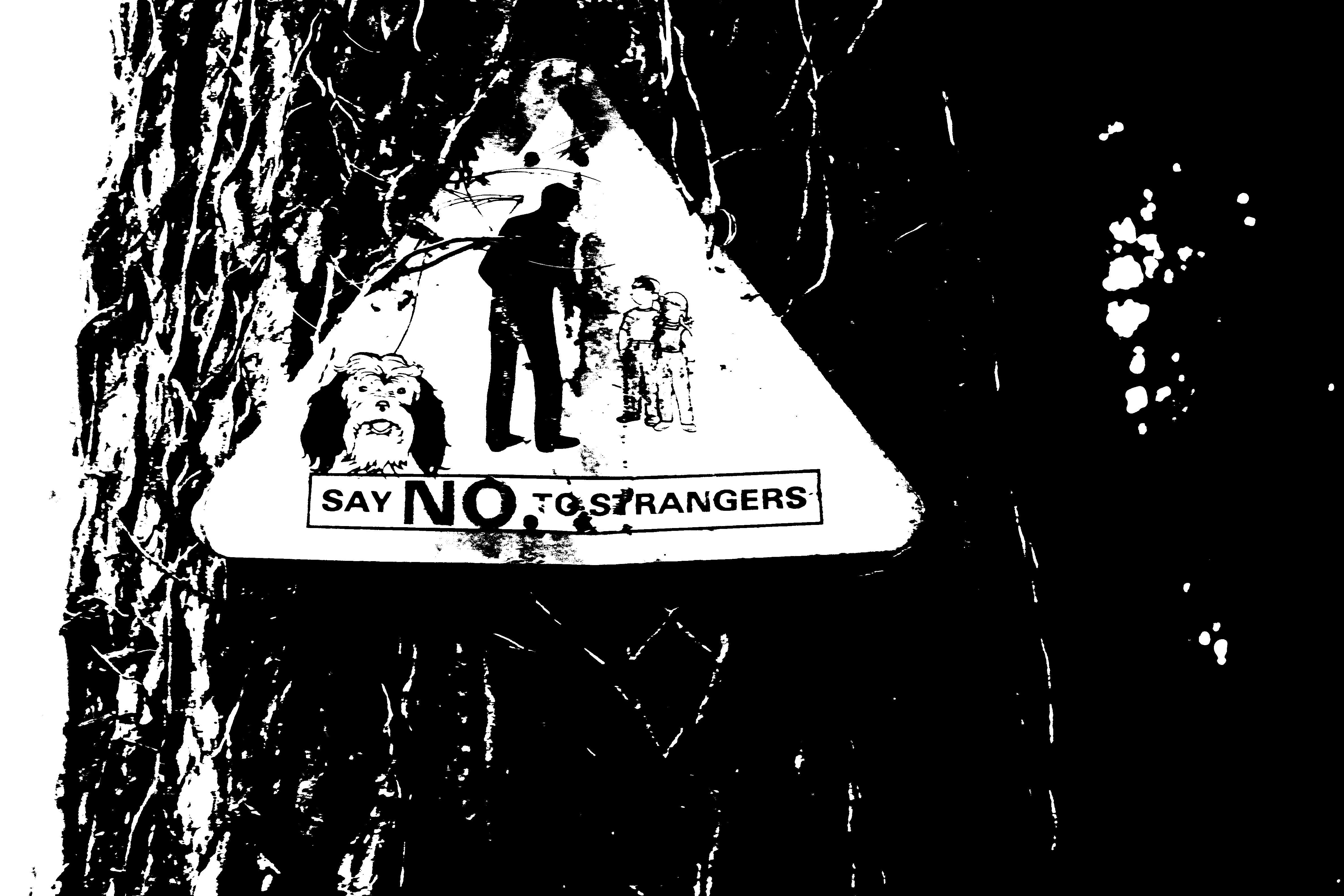
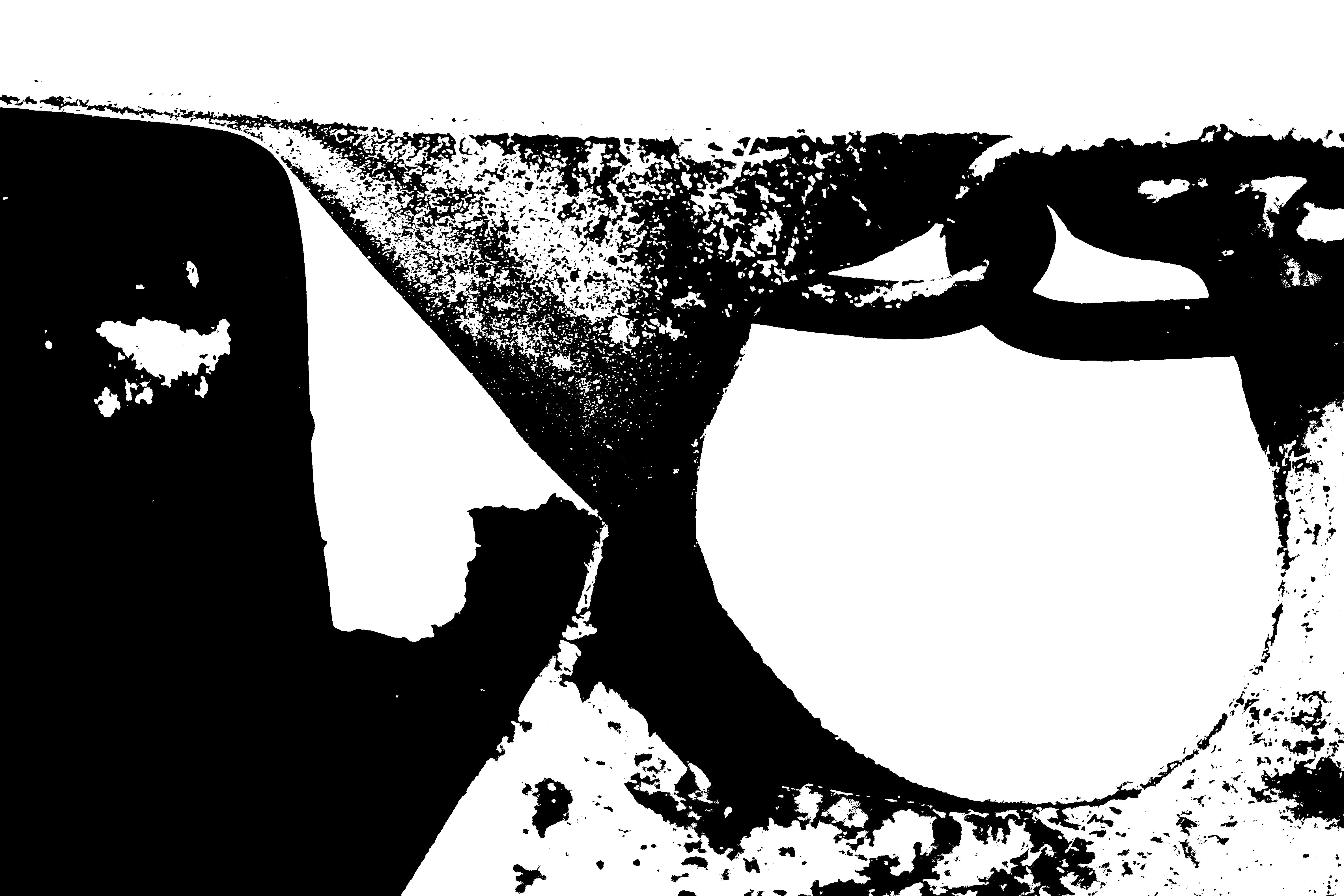
Here I experimented with photographing various signs. On the second image the rust and the peeling vinyl on the sign creates some interesting texture to prevent the image from being too flat.

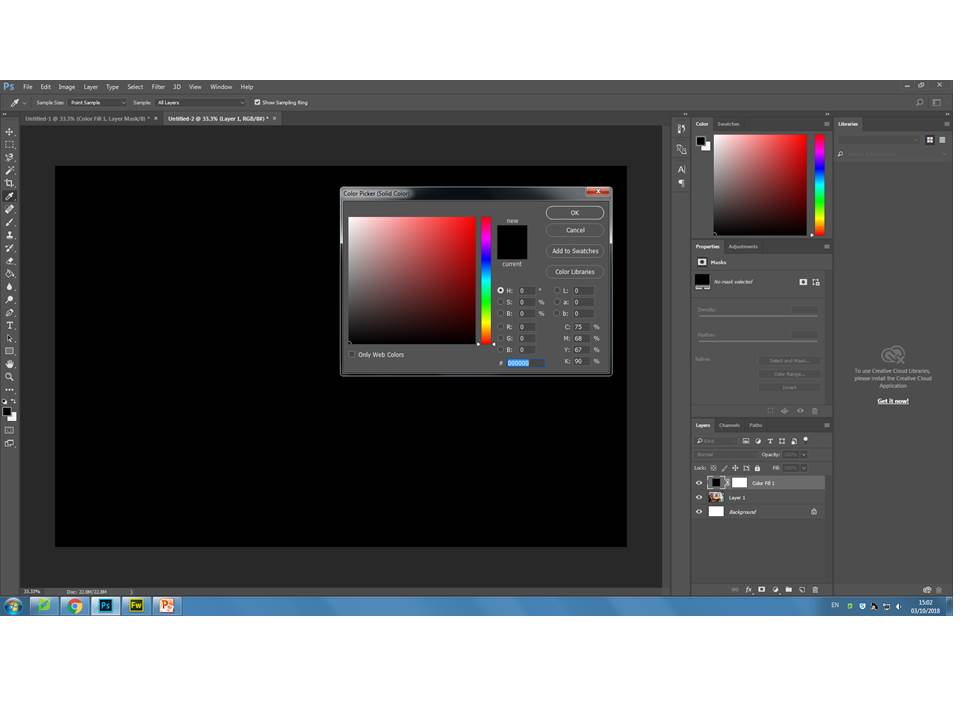

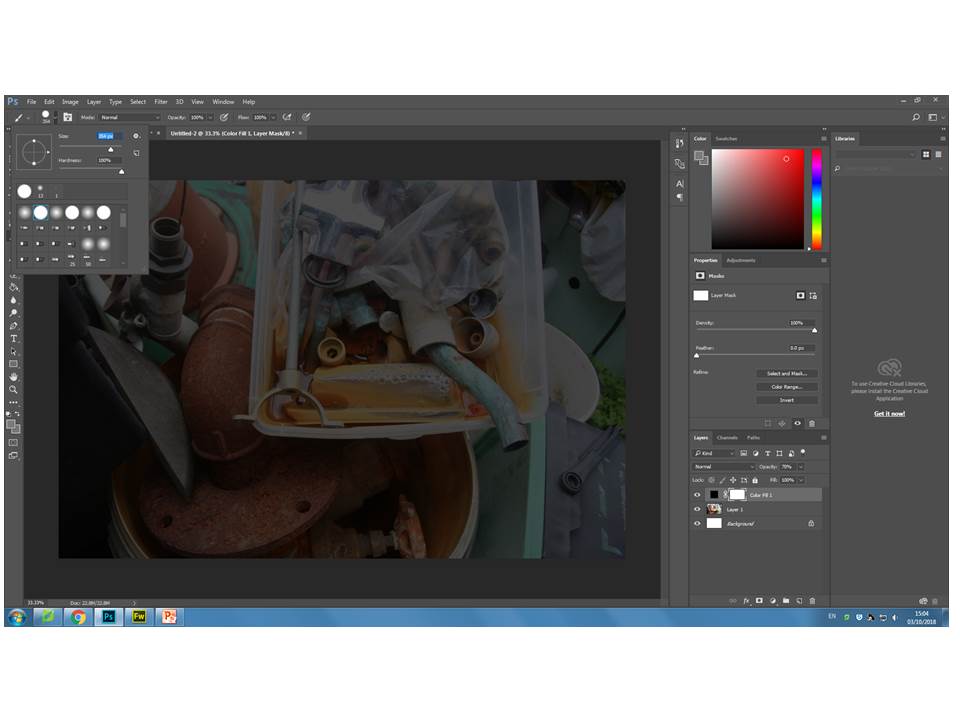
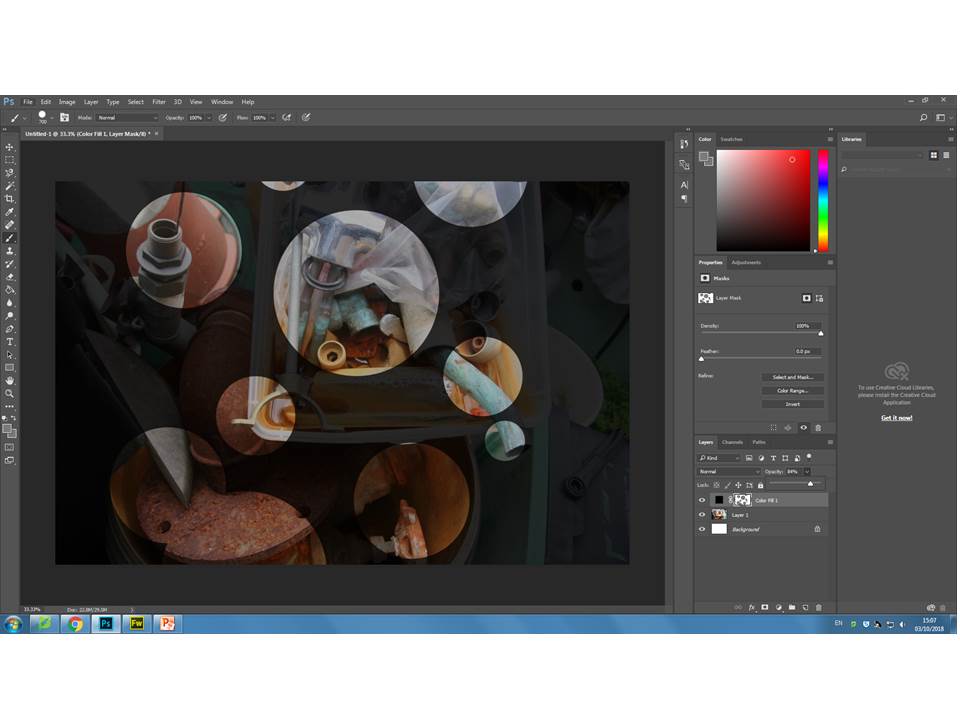
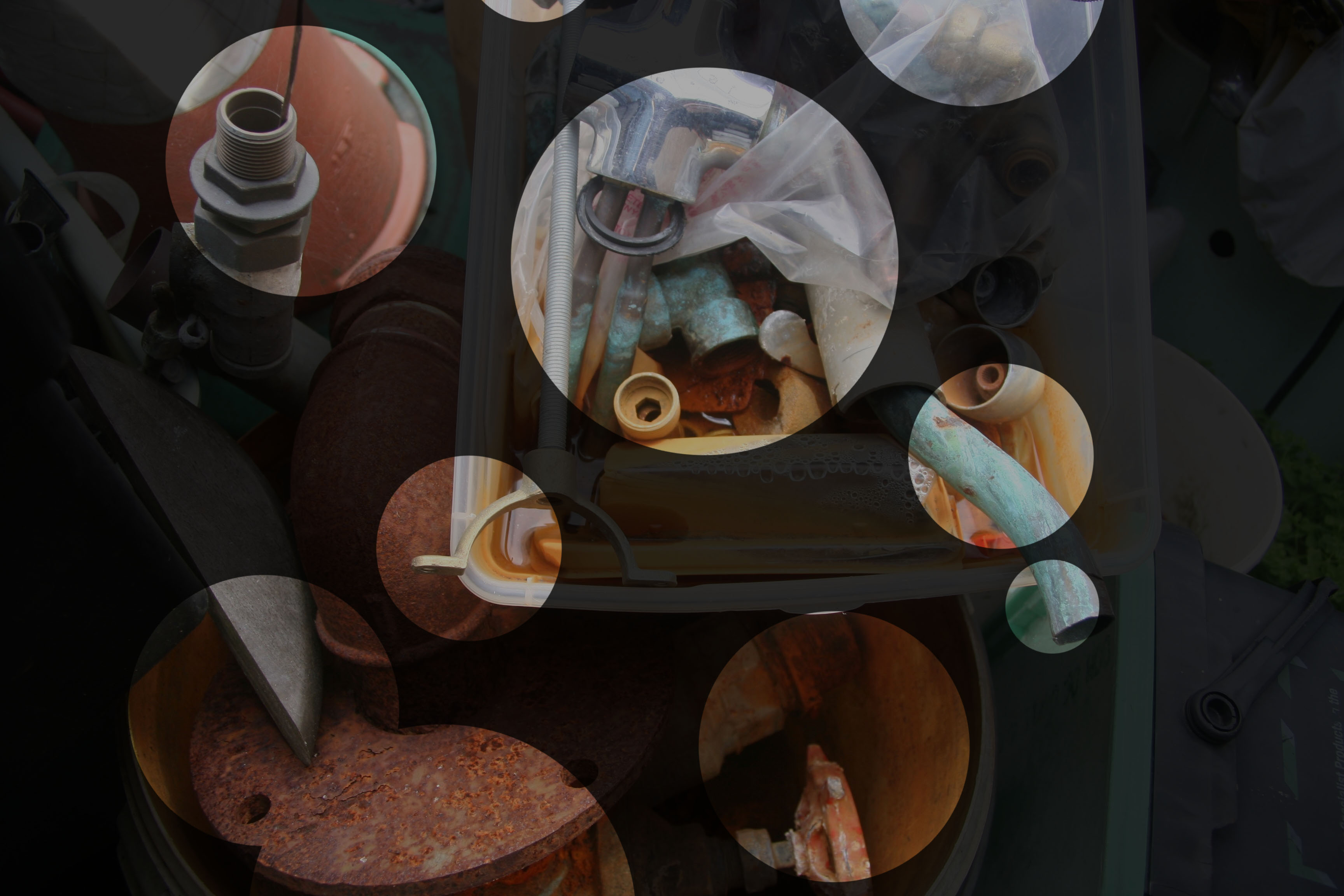
The process to create my final image was relatively simple to complete and is now something I can use more often in my work. I reduced the opacity in a way which the ‘concealed’ area of the photo became visible, but ensuring the ‘revealed’ was more prominent and vibrant to extenuate the colour of the pipes. If I was to do this exercise again I would have used a photo with more colour in order to create more contrast between the dark ‘concealed’ areas and the bright ‘revealed’ areas. I ‘revealed’ the area with the sharpest focus and most depth, for instance the bottom left hand corner had detailed rusting and was displayed well in the natural lighting. The texture of the picture varied between rust and cooper residue, which adds a sense disorganization which fits well with my ‘revealed’ circles because they displayed the areas where most is going on, not the tidier areas of negative space in the background. The pipes are all in 3D form, this adds more depth to the photo with shadowing as displayed in the bottom ‘revealed’ circles.
About Ralph Eugene Meatyard:
Ralph Eugene Meatyard lived in Lexington, Kentucky, where he made his living as an optician while creating an impressive and enigmatic body of photographs. Meatyard’s work spanned many genres and experimented with new means of expression, from dreamlike portraits—often set in abandoned places—to multiple exposures, motion-blur, and other methods of photographic abstraction. He also collaborated with his friend Wendell Berry on the book The Unforeseen Wilderness , for which Meatyard contributed photographs of Kentucky’s Red River Gorge.
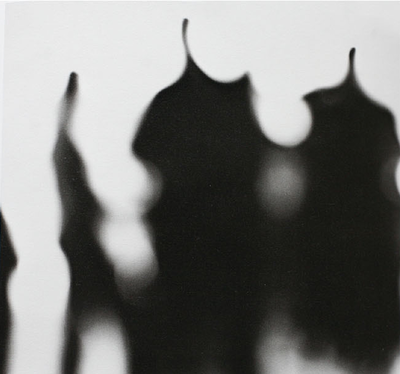
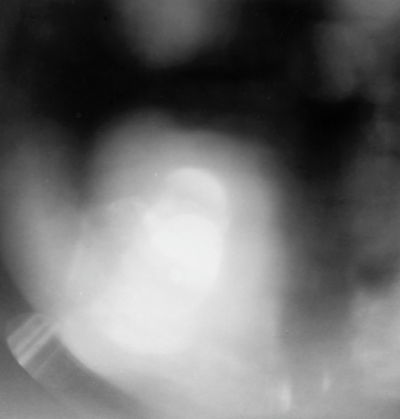
My photos :

My edited work:
I took some of the photos which I thought could be used in inspiration of Eugene, and put a black and white filter on them. I then used the blur option until I got my desired look.


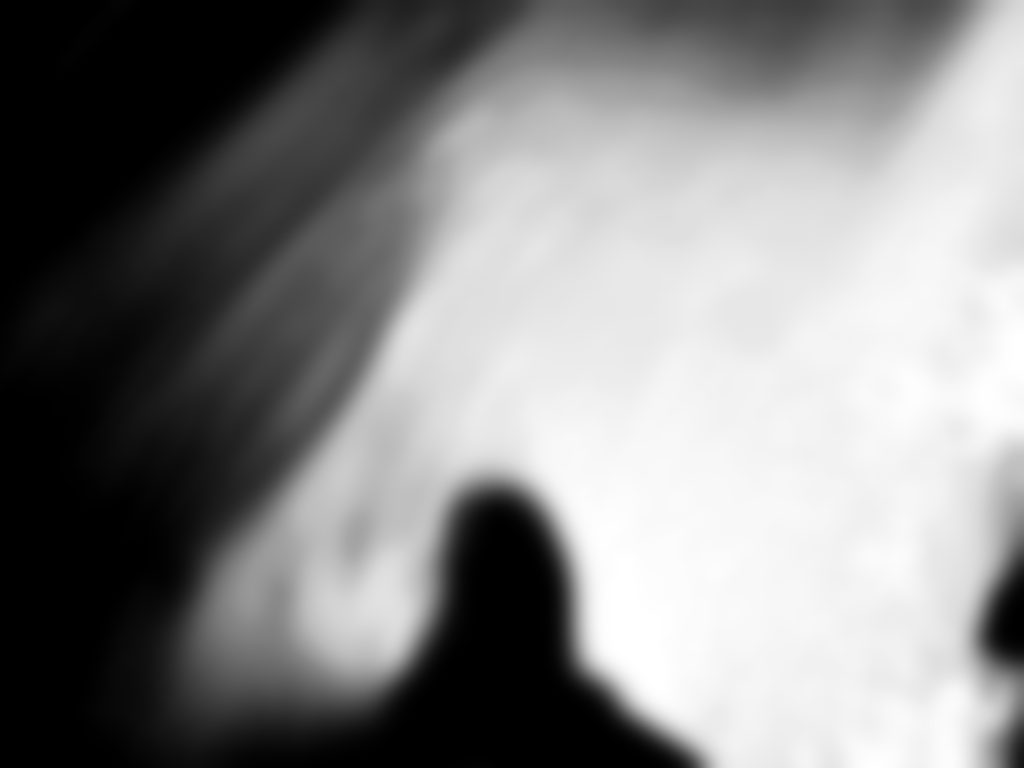

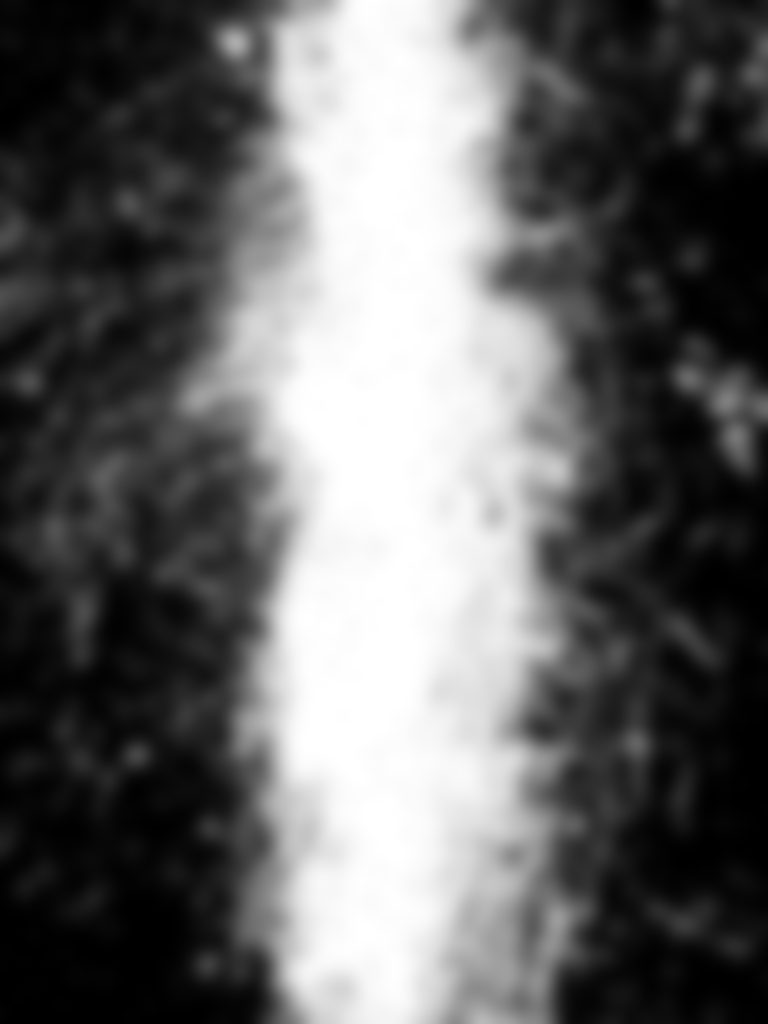


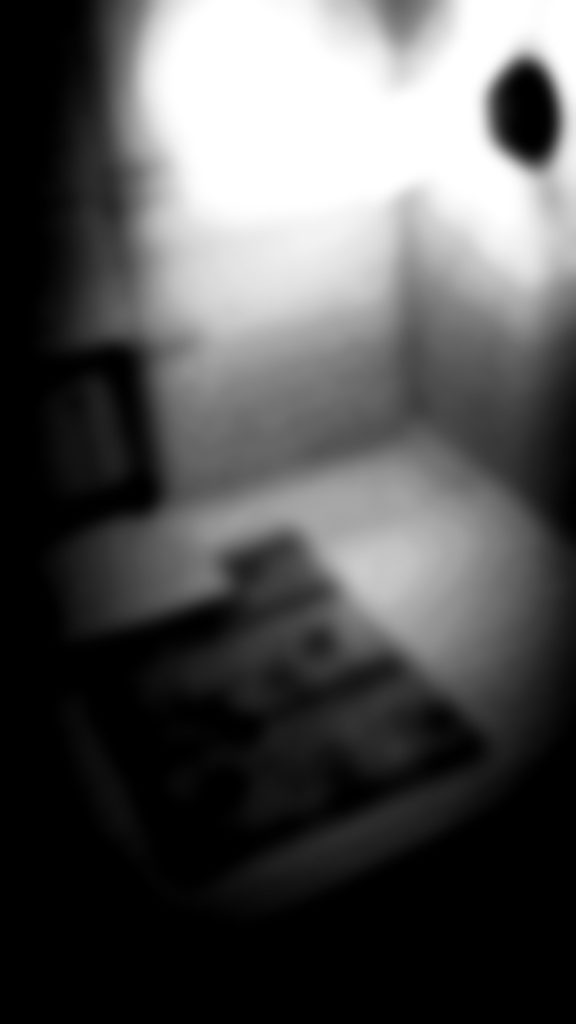
| Ralph Eugene Meatyard was a qualified optician, the company he worked for sold photography equipment. For his son’s birthday he bought him a camera, which sparked his career into photography. He later became a member of the Lexington Camera Club where he pursued his passion for photography outside the main stream, he experimented with multiple exposures, motion blur and depth of field to create non focal pictures. |
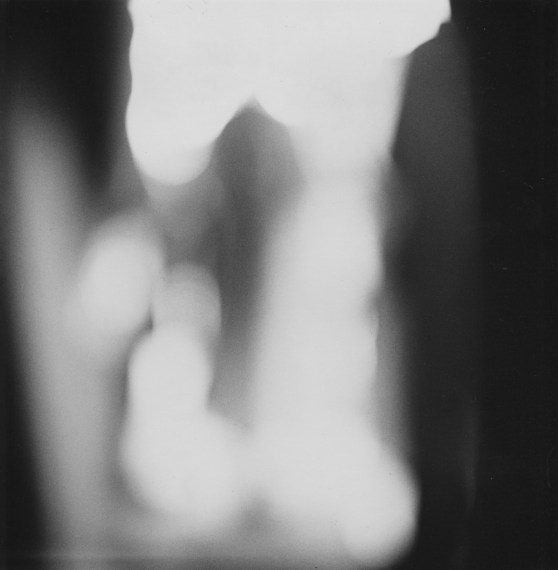
This photo by Meatyard is from his ‘no focus’ collection in which he has many photos with a blur effect, creating an all round negative space. From my interpretations this photo is of busy people walking, its good that I don’t know what the photo is of as this is what Meatyard wanted us to feel, a sense of the unknown. In order for this blur affect to be achieved the aperture must be wide (smallest f-value) so that the blurred area is harsher. A long focal length and a reasonably far distance from the subject would have also been techniques that Meatyard would have used. In all this photos of this particular collection he used a colour balance of black and white, which creates cold tone. The black and white goes well with the motion blur as it creates a mirroring effect for instance the people are walking, everything is fast pace and blurry, you can see no expression from anyone, this is similar to how there is no colour expressing the atmosphere, everything is gloomy and dull. As well as that there appears to be a pattern within this photo, the people are evenly spread apart, there is a clear rule of thirds. This also creates a sense of repetition and how everyday is the same nothing changes, there is nothing new to look forward to, everything is black and white.

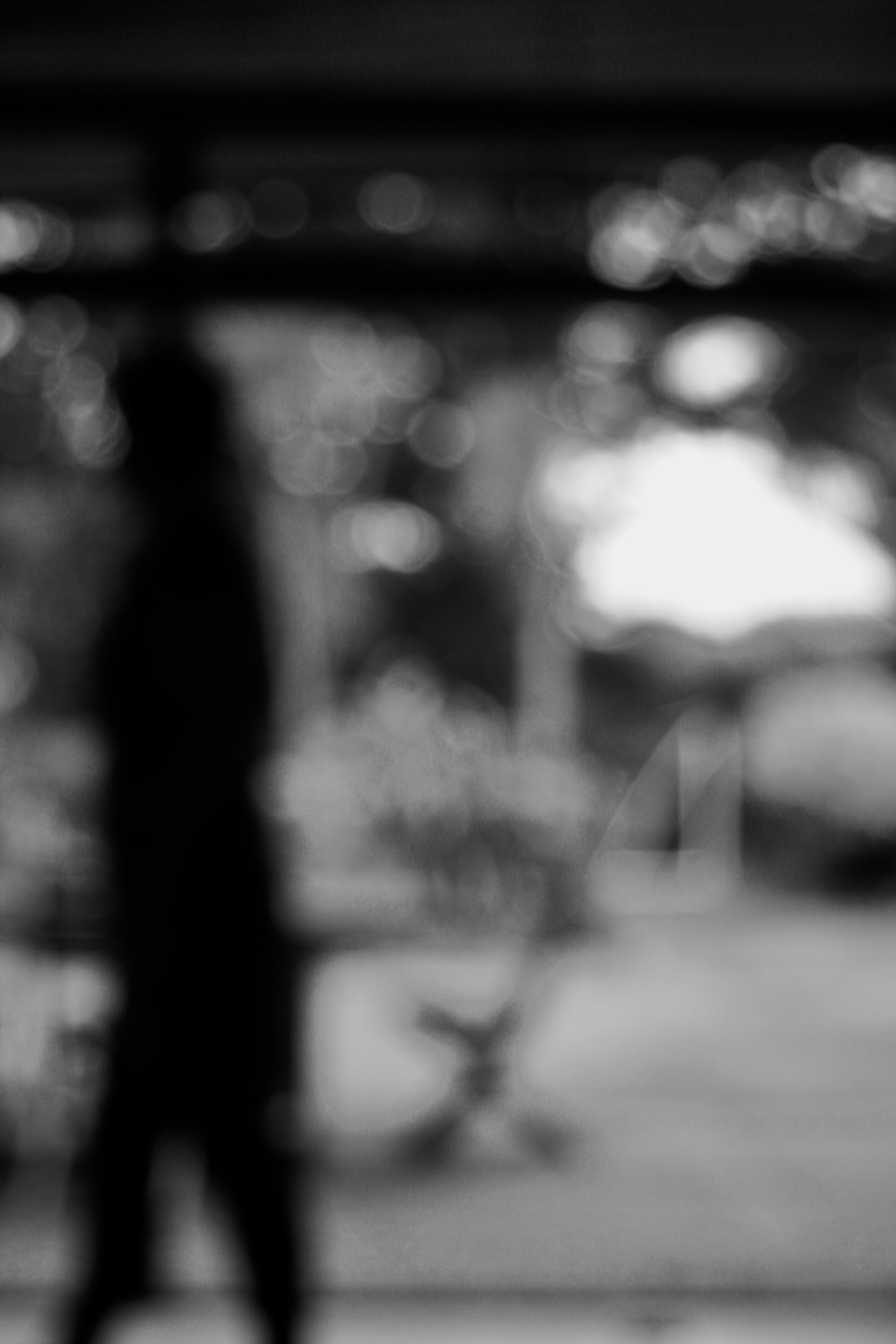
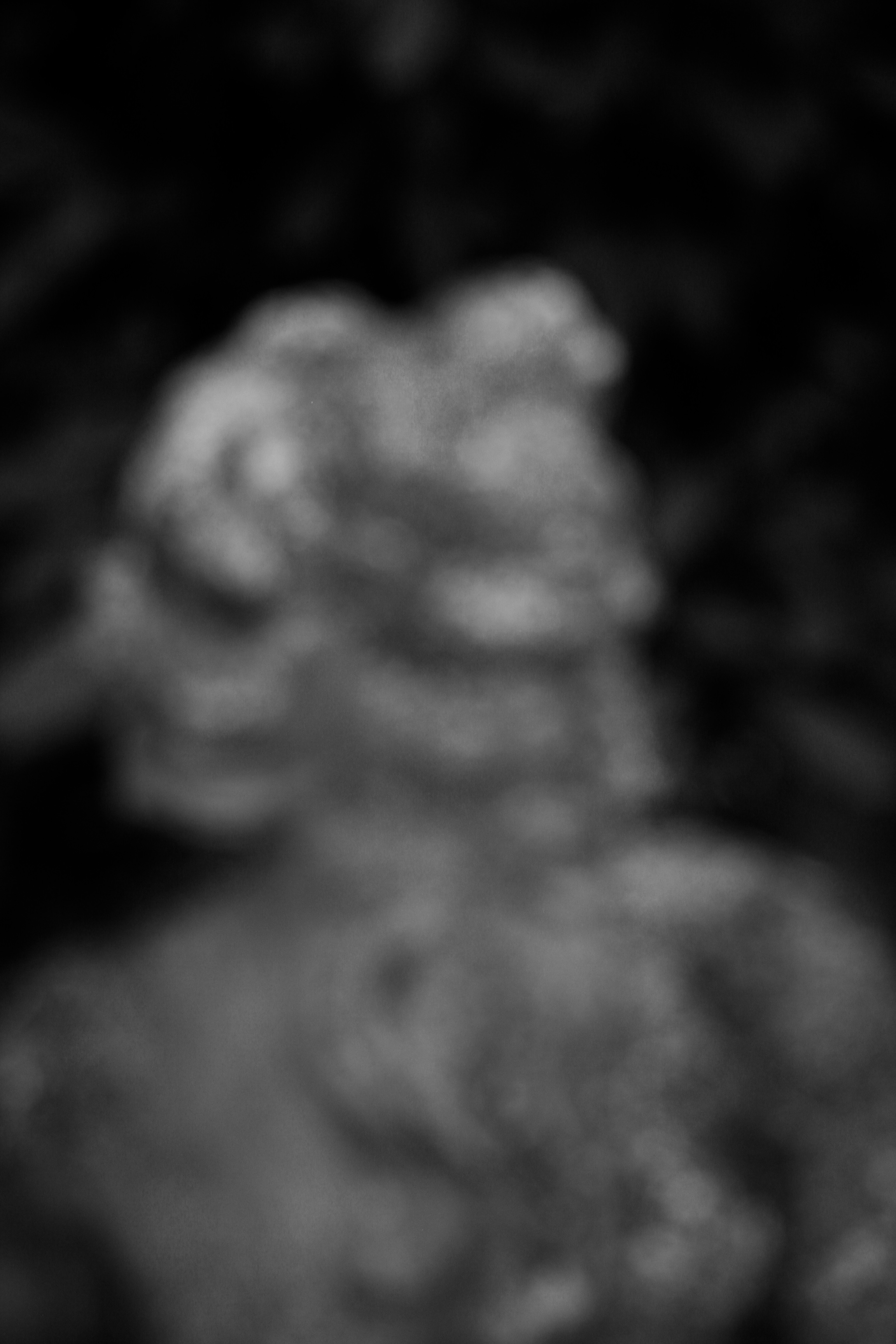
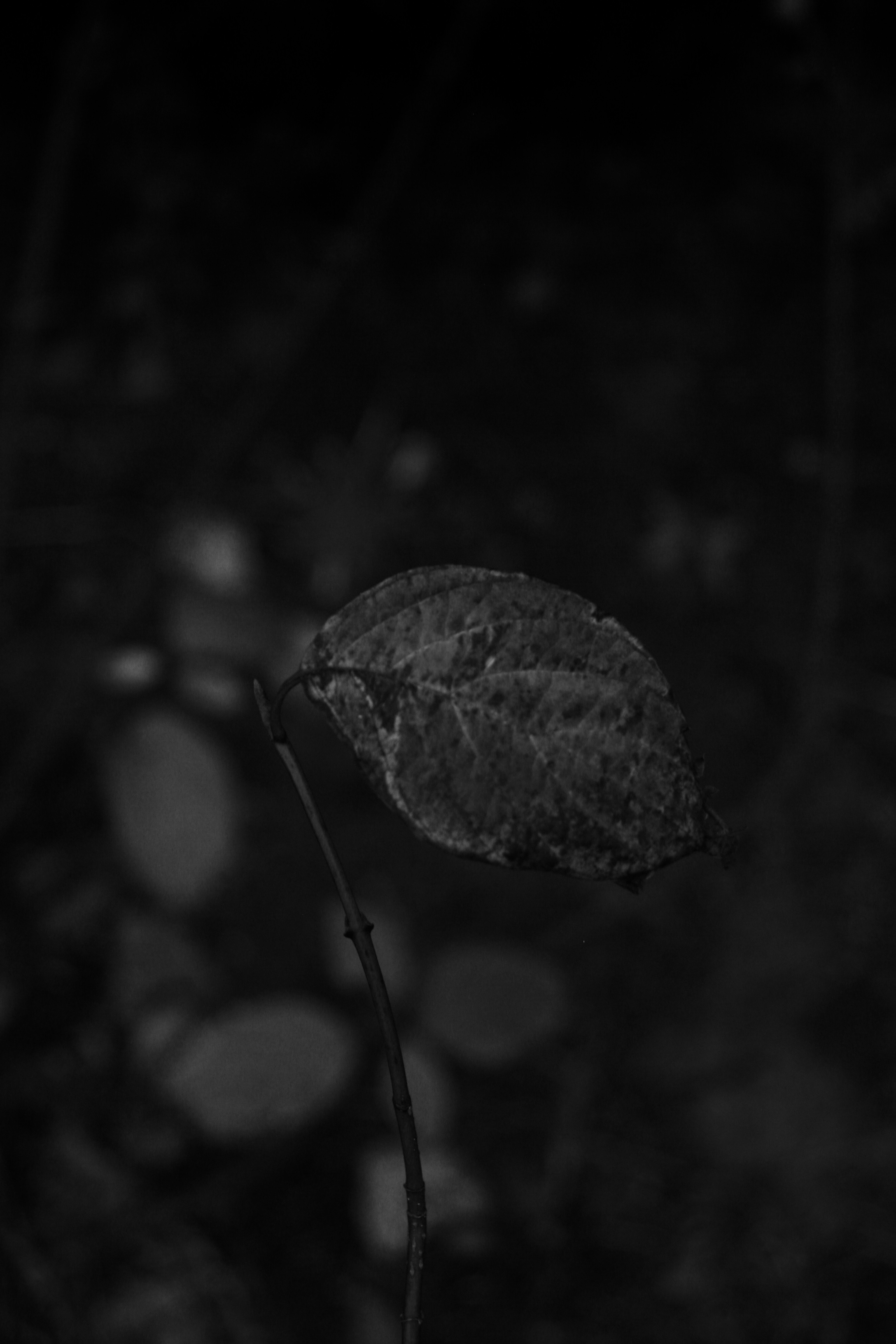
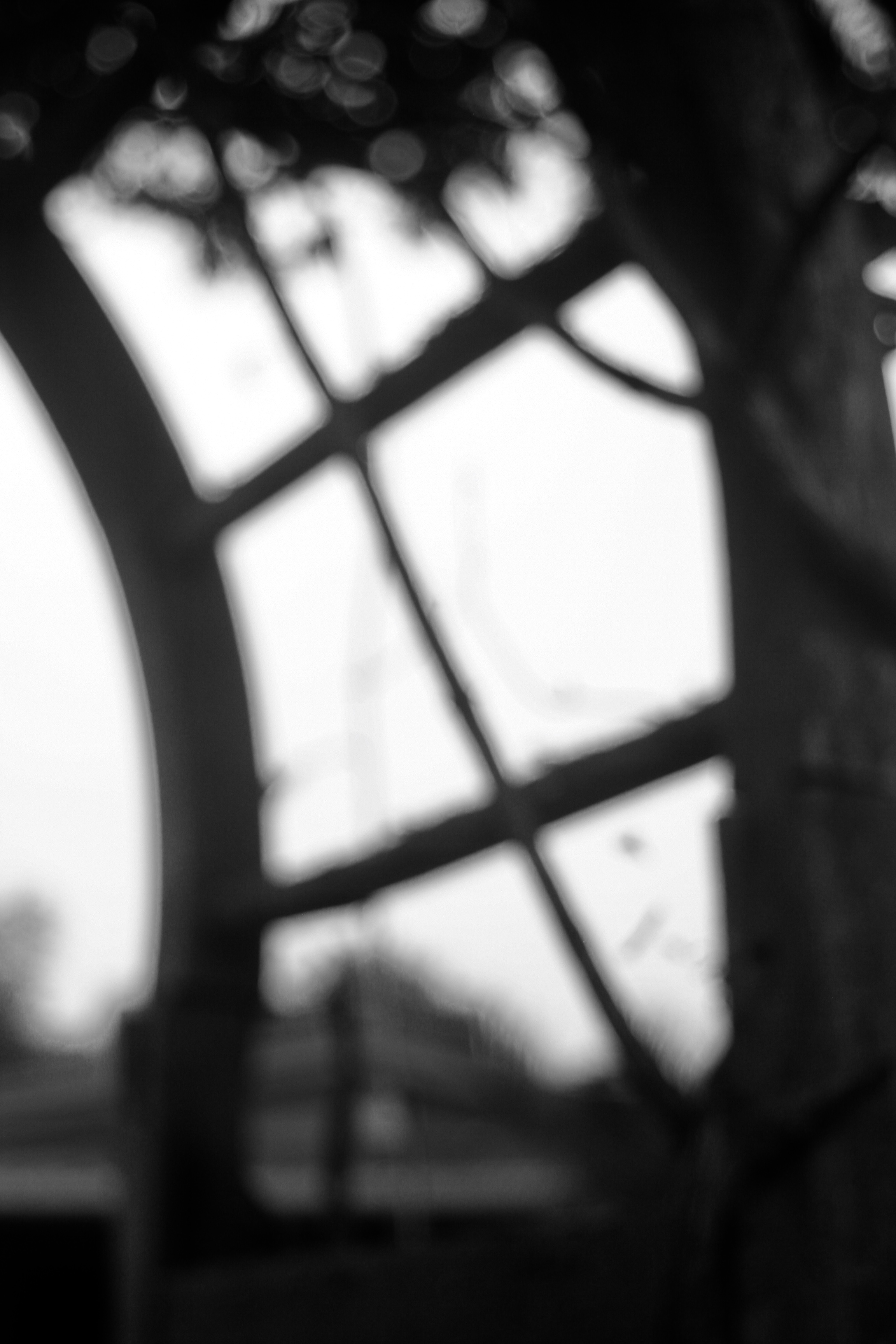
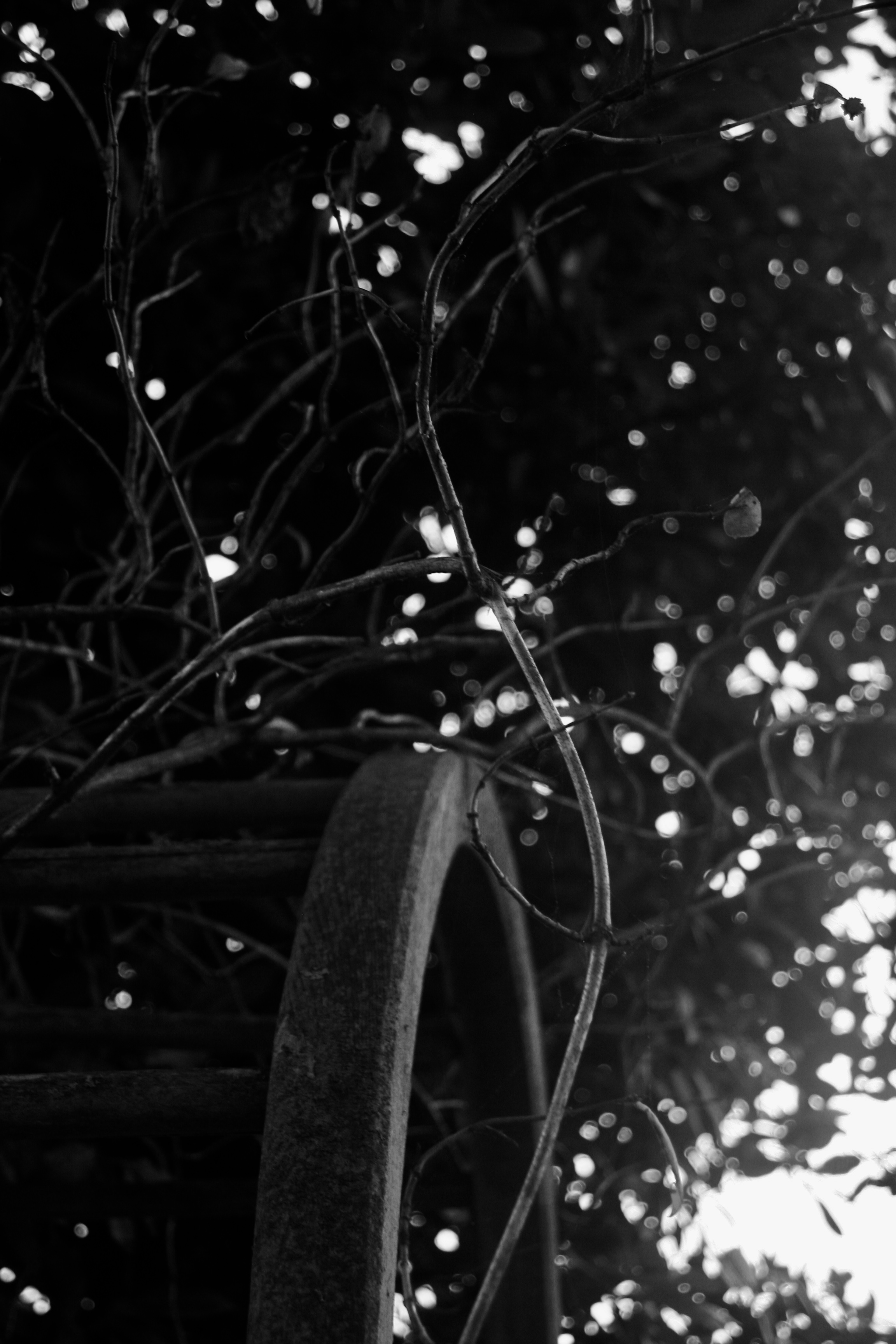
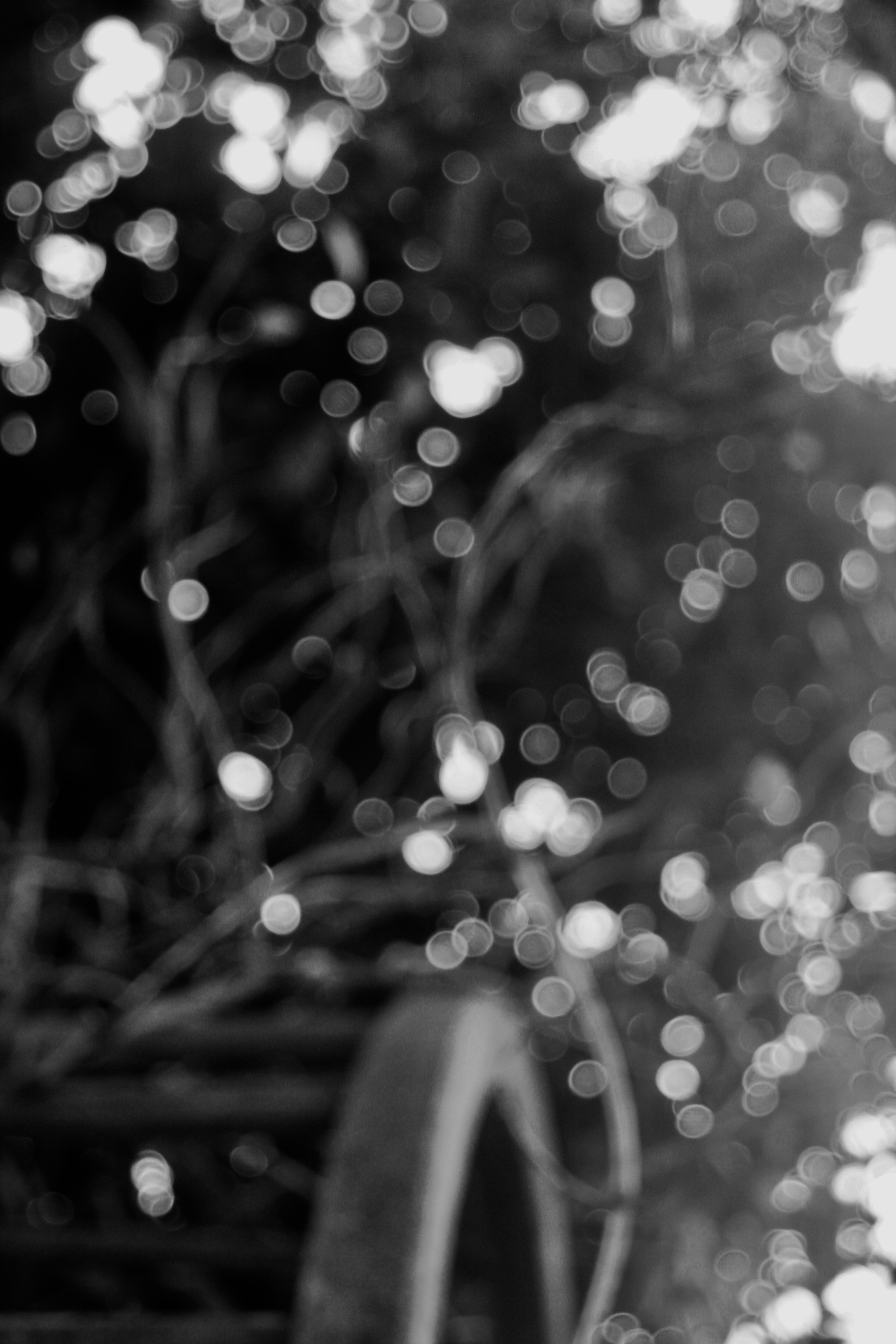

In response to Meatyard’s work I experimented with focal length, depth of field and aperture. I took most of my inspiration from his ‘zen twigs’ collection, focusing in on plants and branches and blurring out the background to create large negative space. In order to achieve this set my camera to a large aperture and I had a shallow depth of field. Overall I am pleased with my final images, I decreased the brightness of all images and made them black and white, to resemble the work of Meatyard. I have tried to mirror his work as my photos are either completely blurred or there is one focal point and the rest is out of focus negative space.
THE PROCESS:
In order to create this final piece I followed the instructions provided to me in order to achieve this conceal/reveal image which is composed of a photo which has a panel layer added to it. Then using the brush tool, i was able to achieve varying sizes of revealing circles that show the original photo. The final outcome is very unique and brings up multiple questions for the viewer of the image.



ANALYSIS:
This is the final image which I produced from the conceal/reveal task. As the title suggests, much of the image is concealed with a black panel layer. It puts many ideas into the head of the viewer. What is hidden behind the black? Why did they choose to only show certain parts of the image? The revealed parts of the image all allude to different things. I chose to reveal the circular structure, central in the image because i felt that this would create a sense of pattern and unity within the image. It is the area of the image which draws the most attention. I kept the circles in a linear pattern as this creates flow and movement within the image. I did not want to decrease the opacity of the black panel as I wanted to retain that question in the viewers mind of, what is behind the concealed parts?
Coming through the glass is a very soft and diffused light which varies in intensity in different parts of the image, the bottom left hand corner being more strong and the top right more soft. The composition in this image is very simple and is purely made up of strong, symmetrical, repeating lines that come towards a singular point central in the image. There is a lot of geometrical patters that play together to create a very harmonious photo. The co lour range of this image is fairly simple, being mostly composed of soft grays, blacks and subtle blues. The photo has a warm hue to it as can be seen in the lighter areas of the image. The photo lacks any sort of foreground, mid ground or background therefore it is quite flat and 2D.
In order to take this image, I zoomed in, decreasing the field of view and increasing the focal length as it was quite far up and could not be seen clearly from a stationary position. I kept the ISO fairly low, at 400, as it was a bright day and i wanted to avoid overexposing the image. I used auto focus whilst taking this image as it is very flat and did not require much attention to get it in focus. I used a fairly low shutter speed due to the strong light coming through the glass, which prevented the image from becoming overexposed.

Albert’s work primarily focused on the idea of making ordinary items into extraordinary pieces of photography. The majority of his notable work is in black and white giving a sense of drama to his pieces. Albert also published the well known book “The World is Beautiful” which documented his work focusing on subjects such as industrial subjects, mass produced items and natural forms. His work often features a small aperture allowing for the majority of the image to be in focus, creating a objective look to his photo’s.
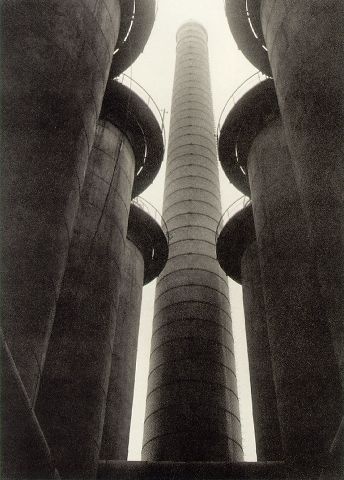
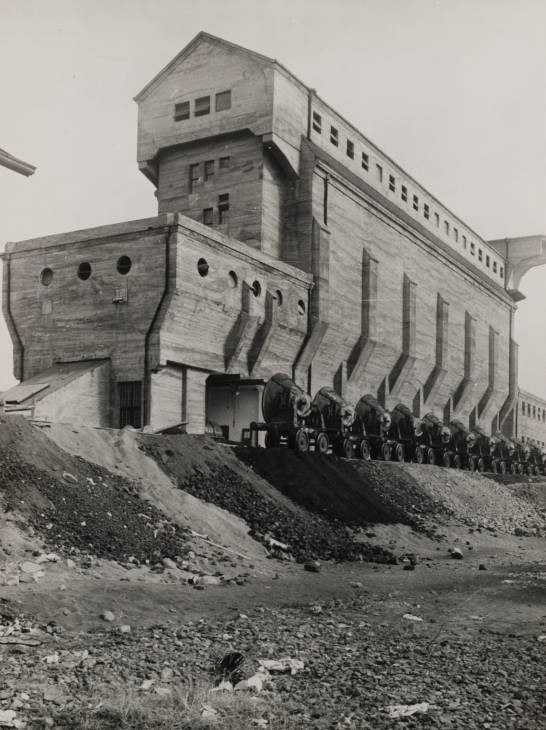
This particular photo utilizes an organic subject as the photo includes rows of trees. The photo features a small aperture however due to the fog in the photo it gives the appearance of depth of field. It features strong contrasting tones between the thick white fog and the almost black trees.

Response:


 Personal Favorite Images:
Personal Favorite Images: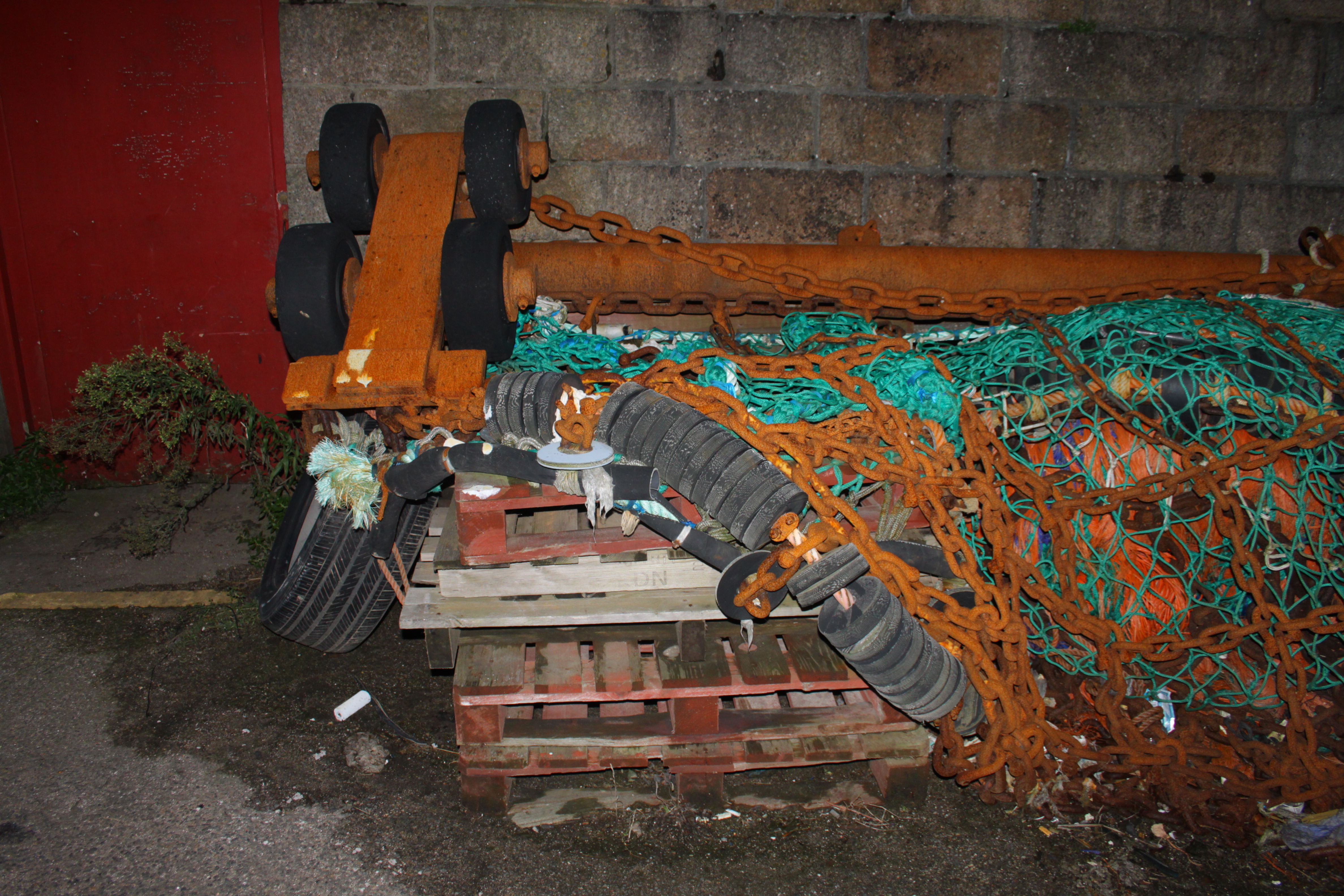



Final Choice: 